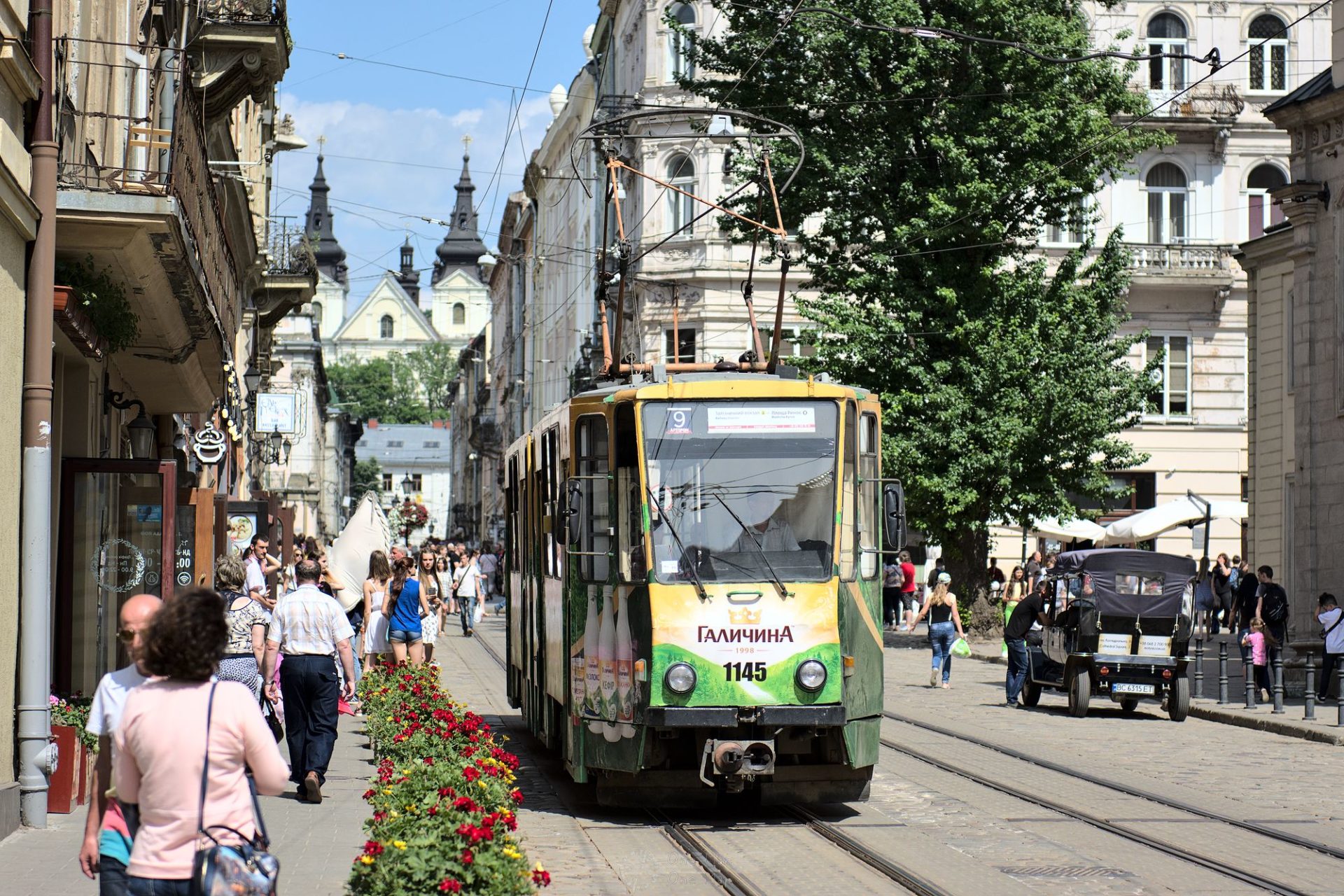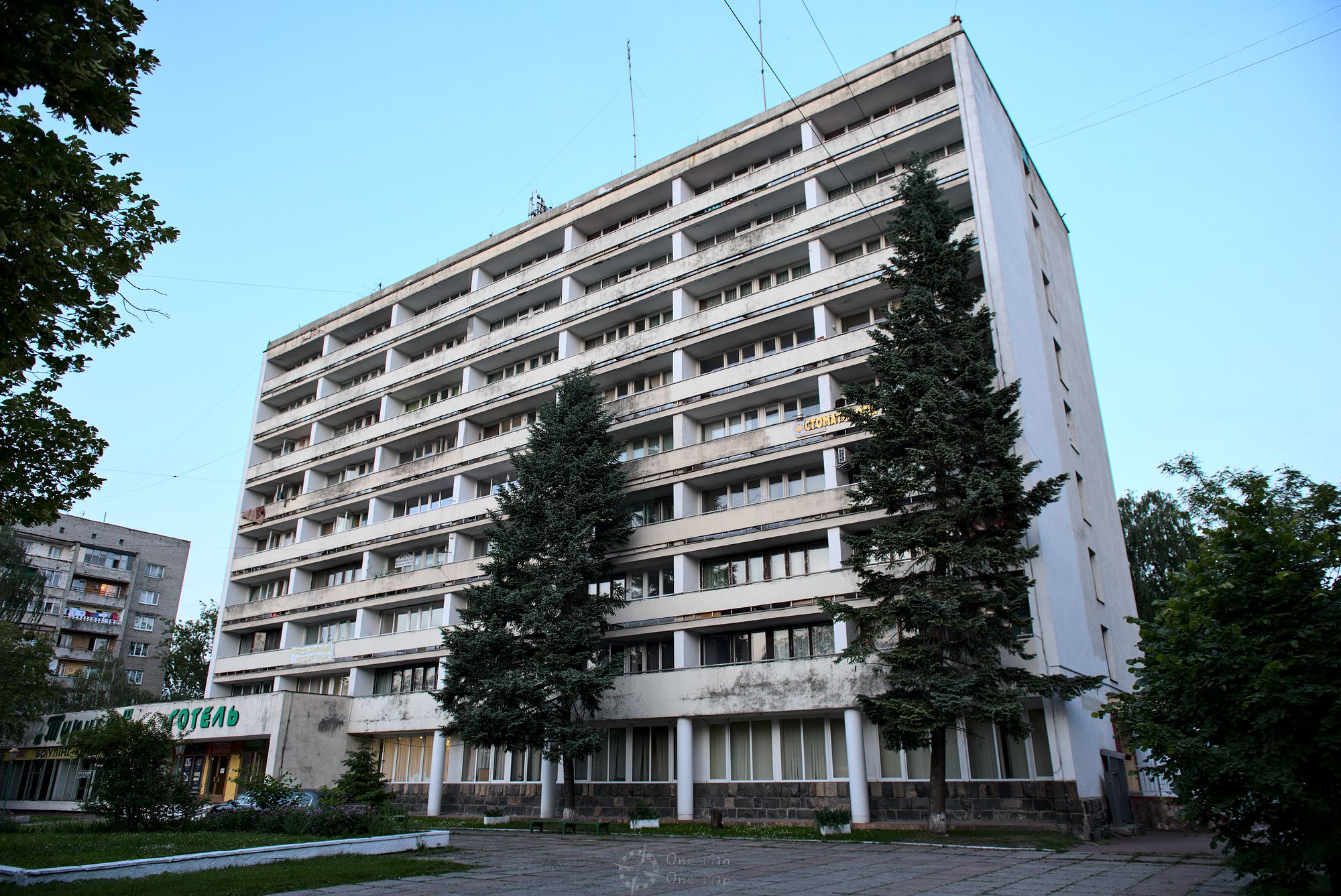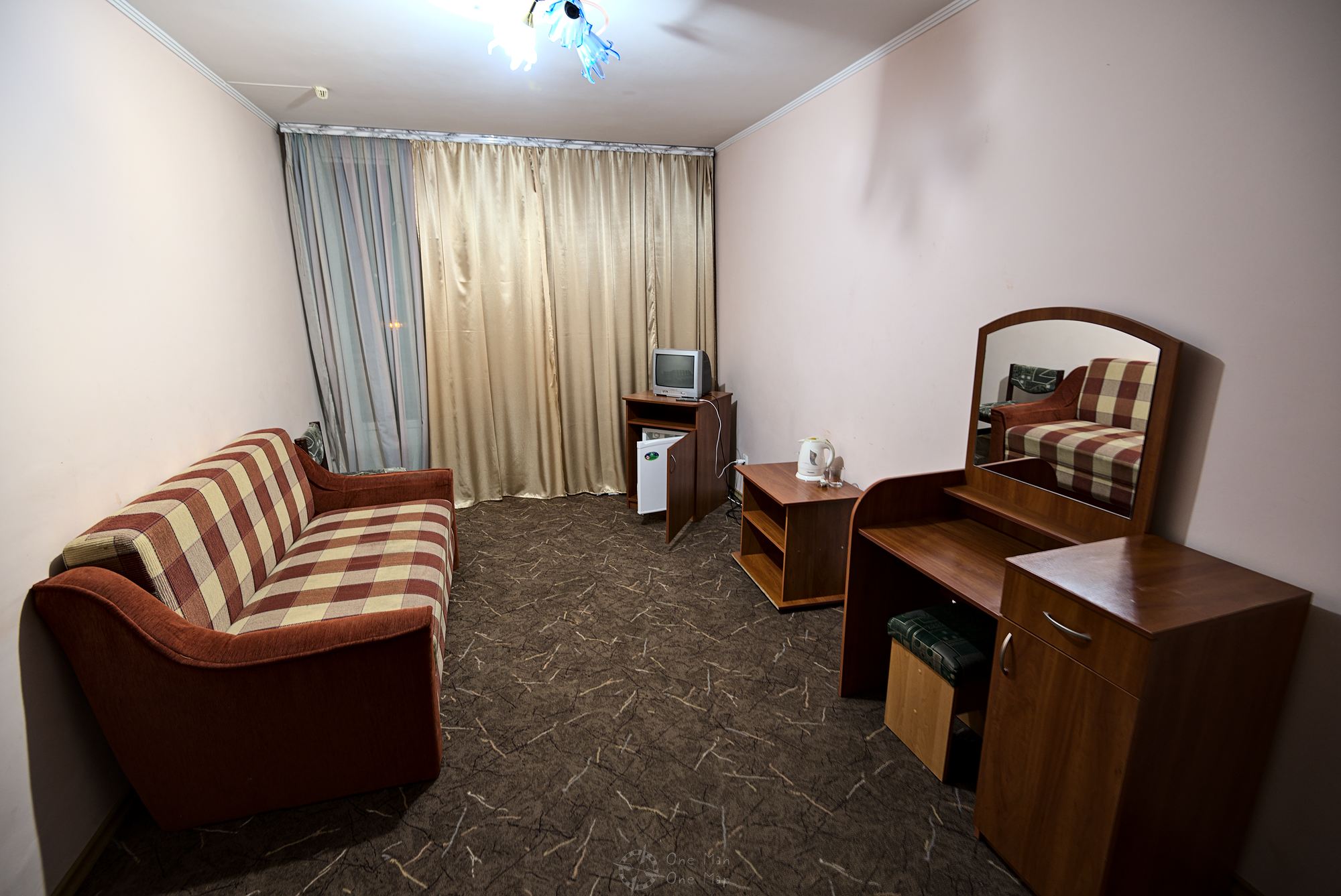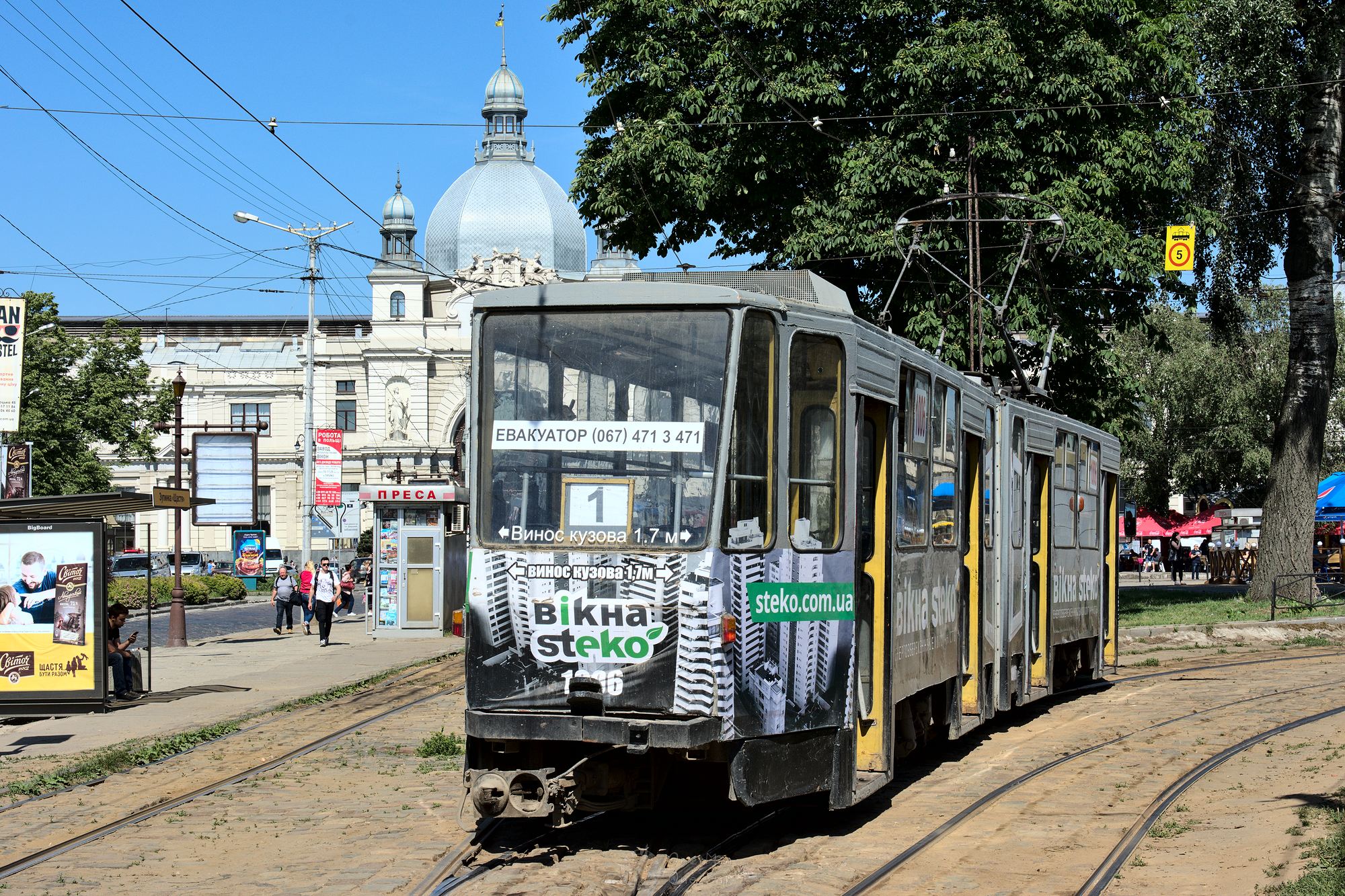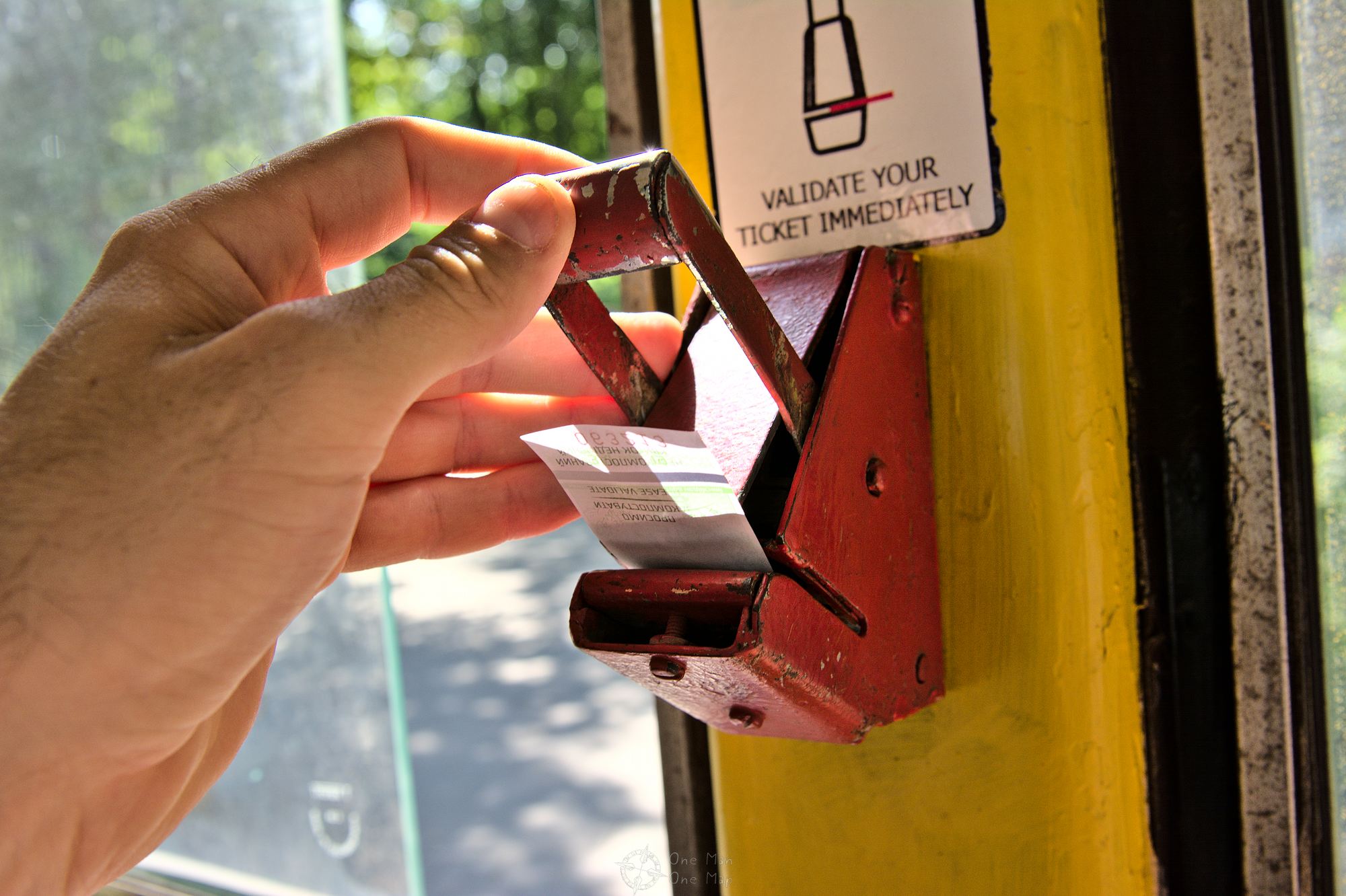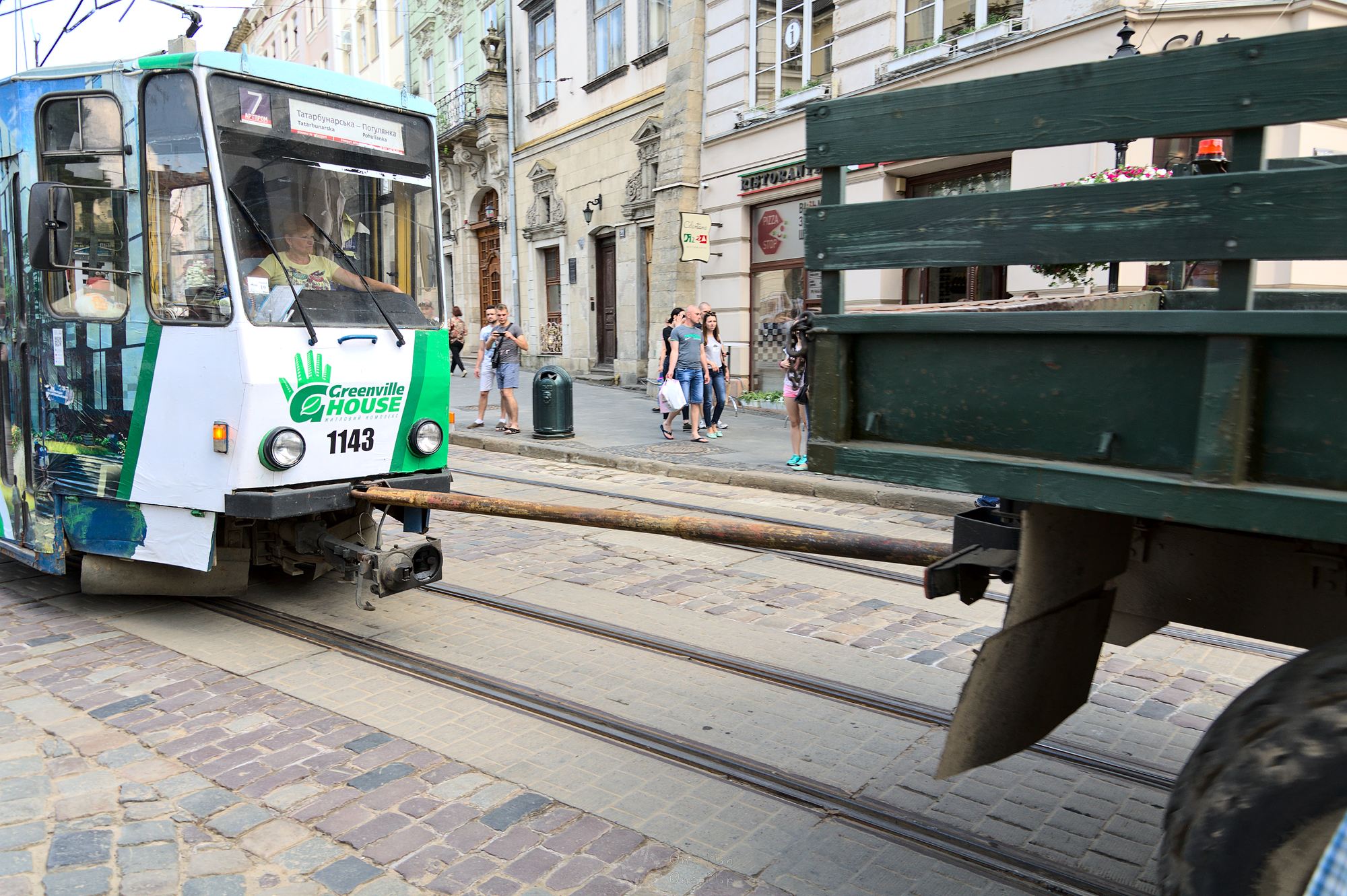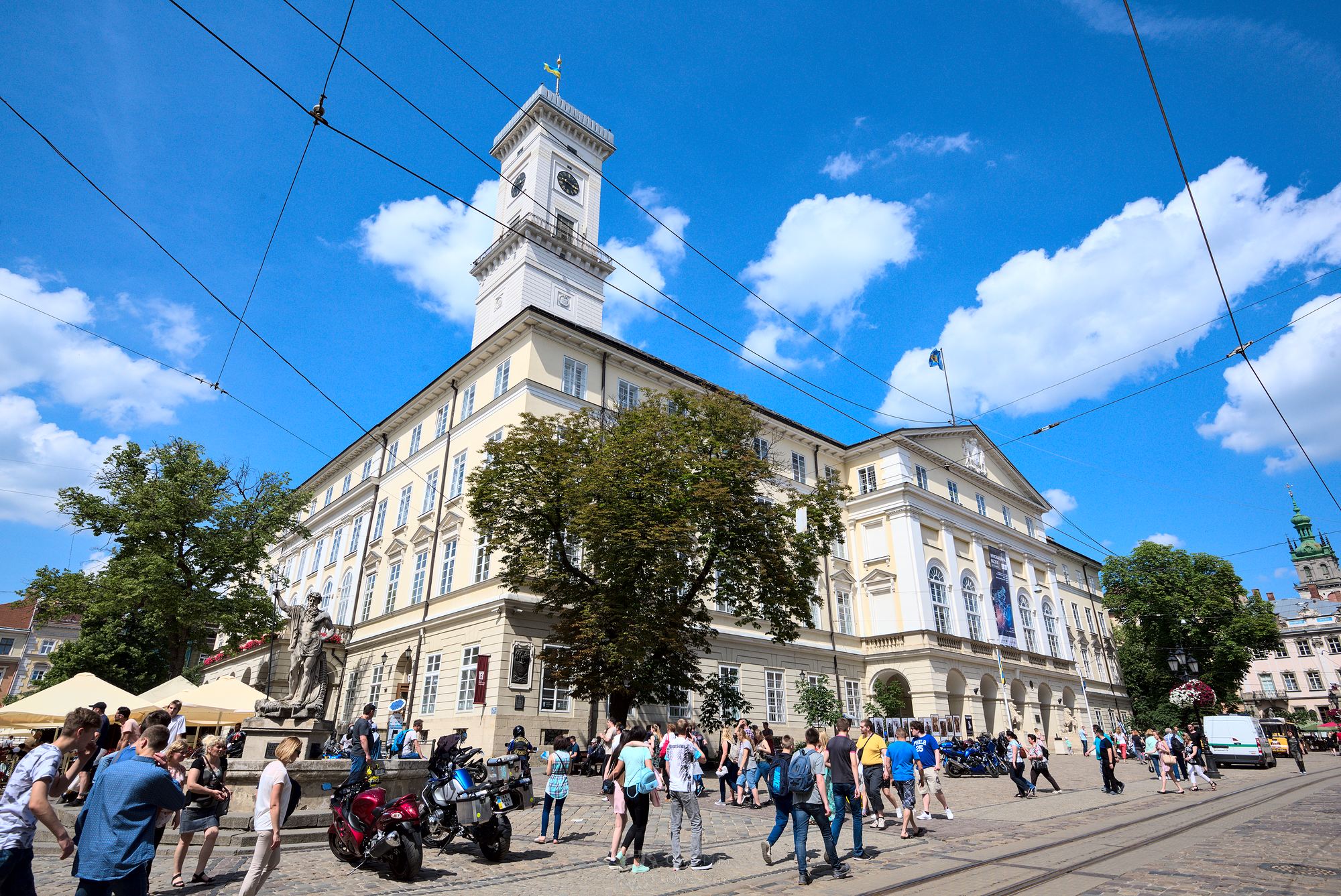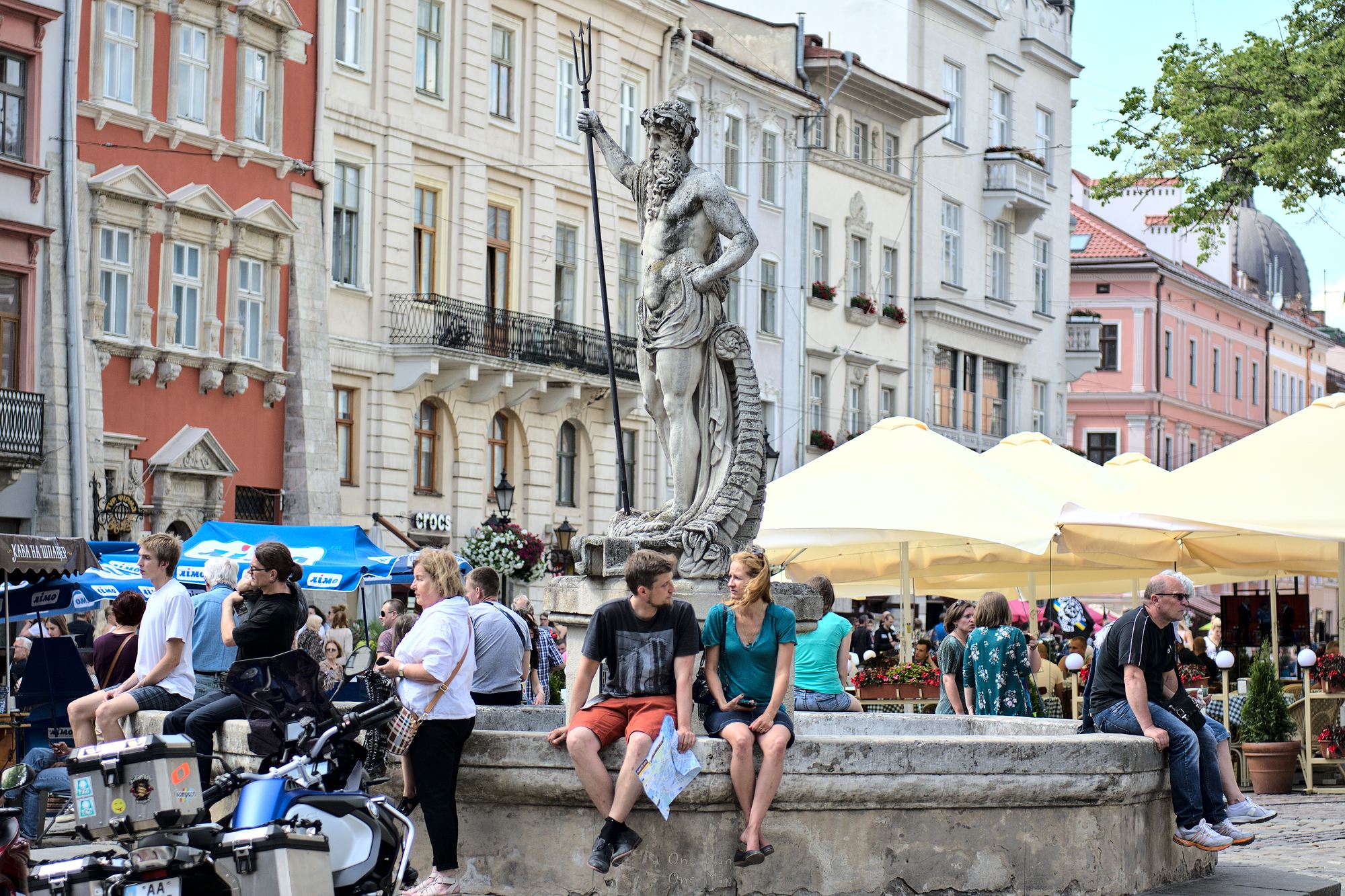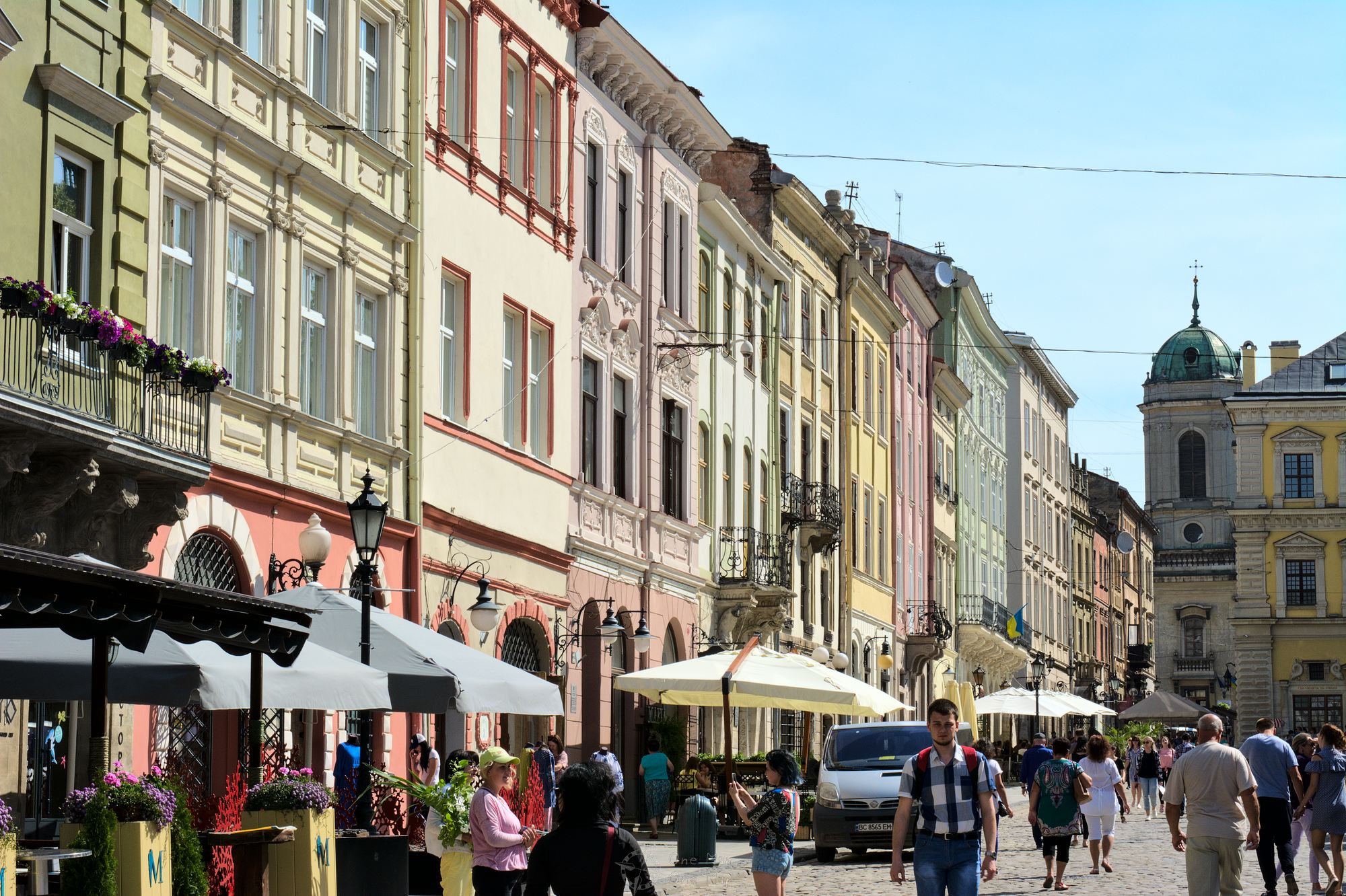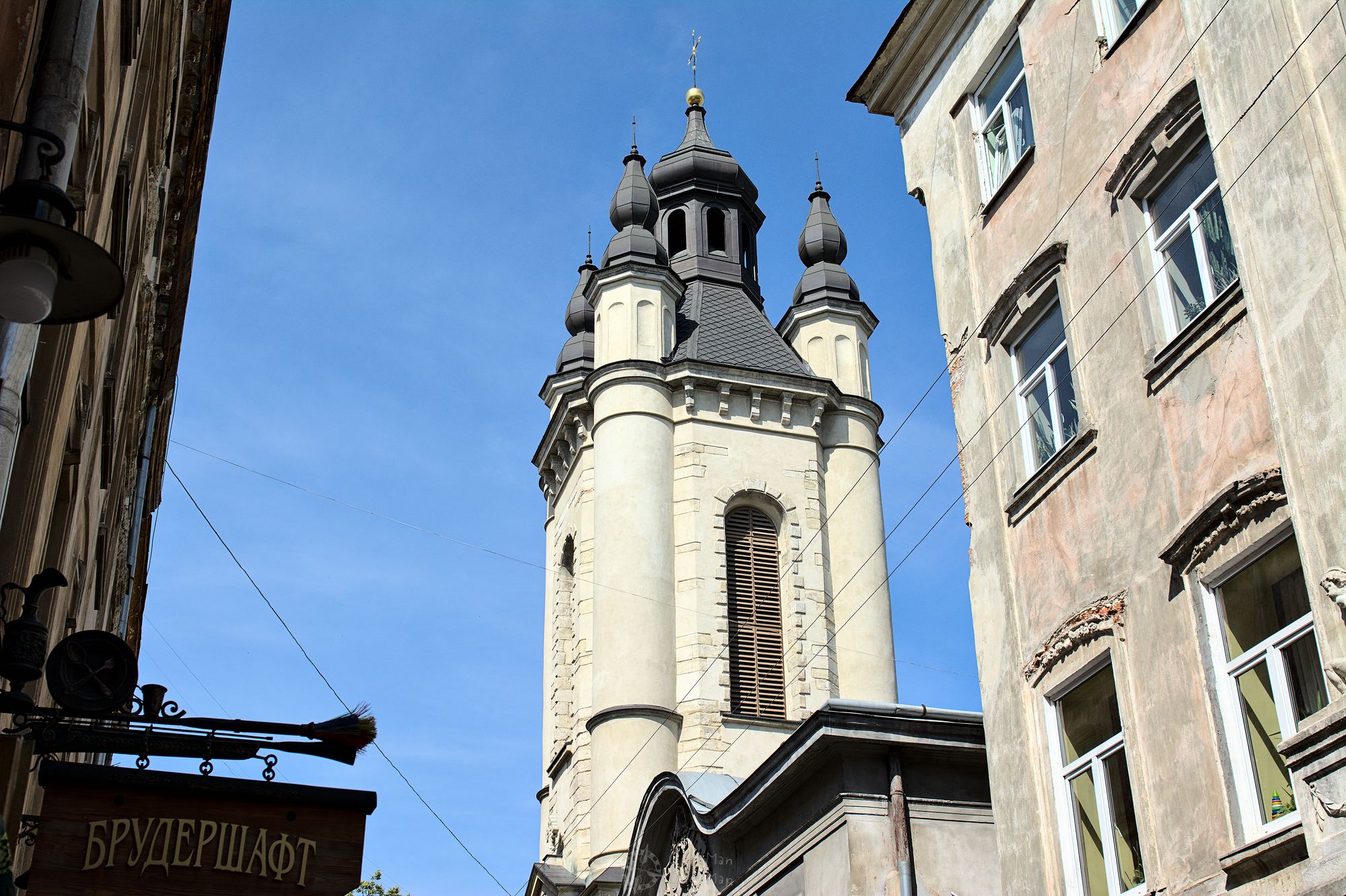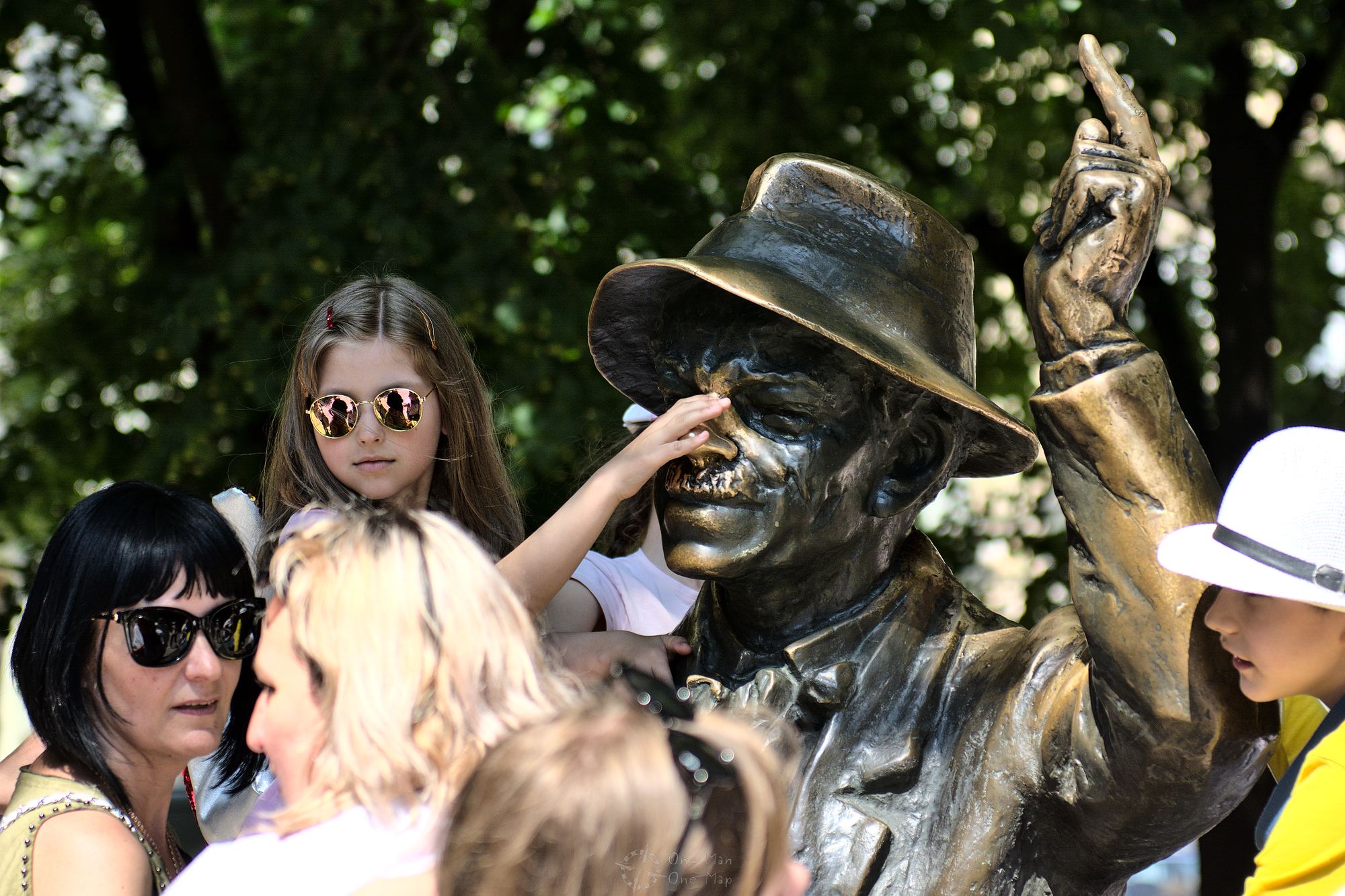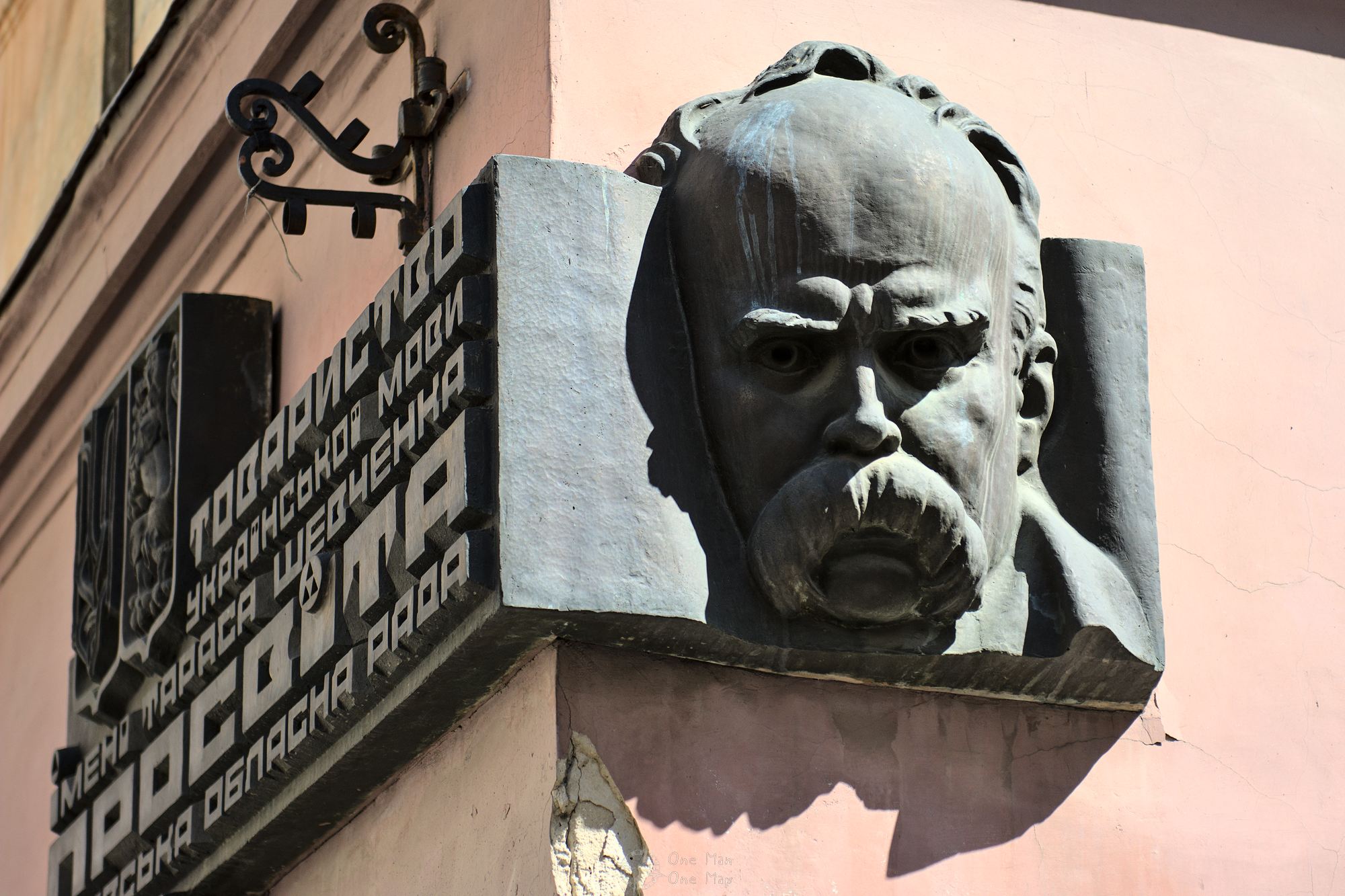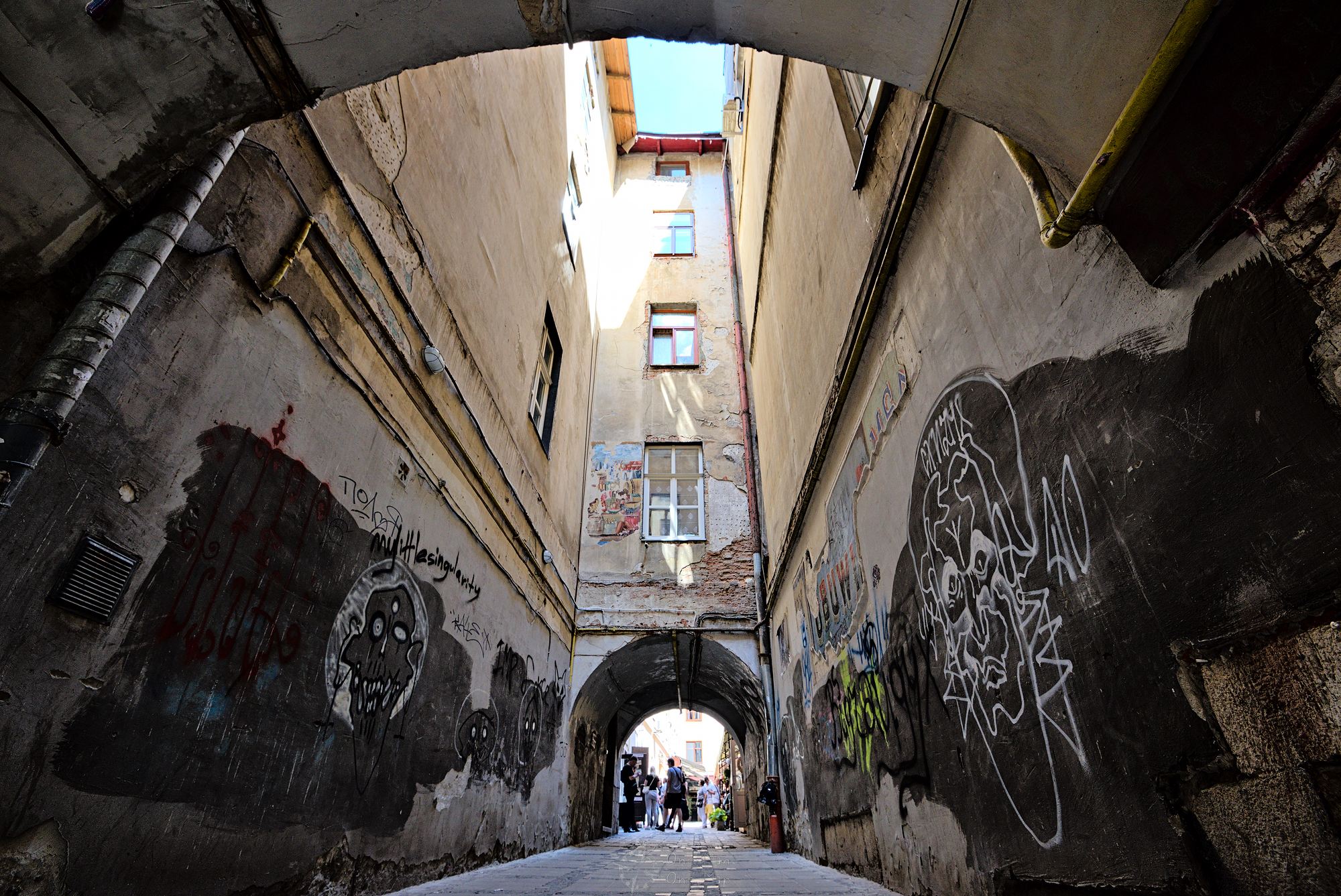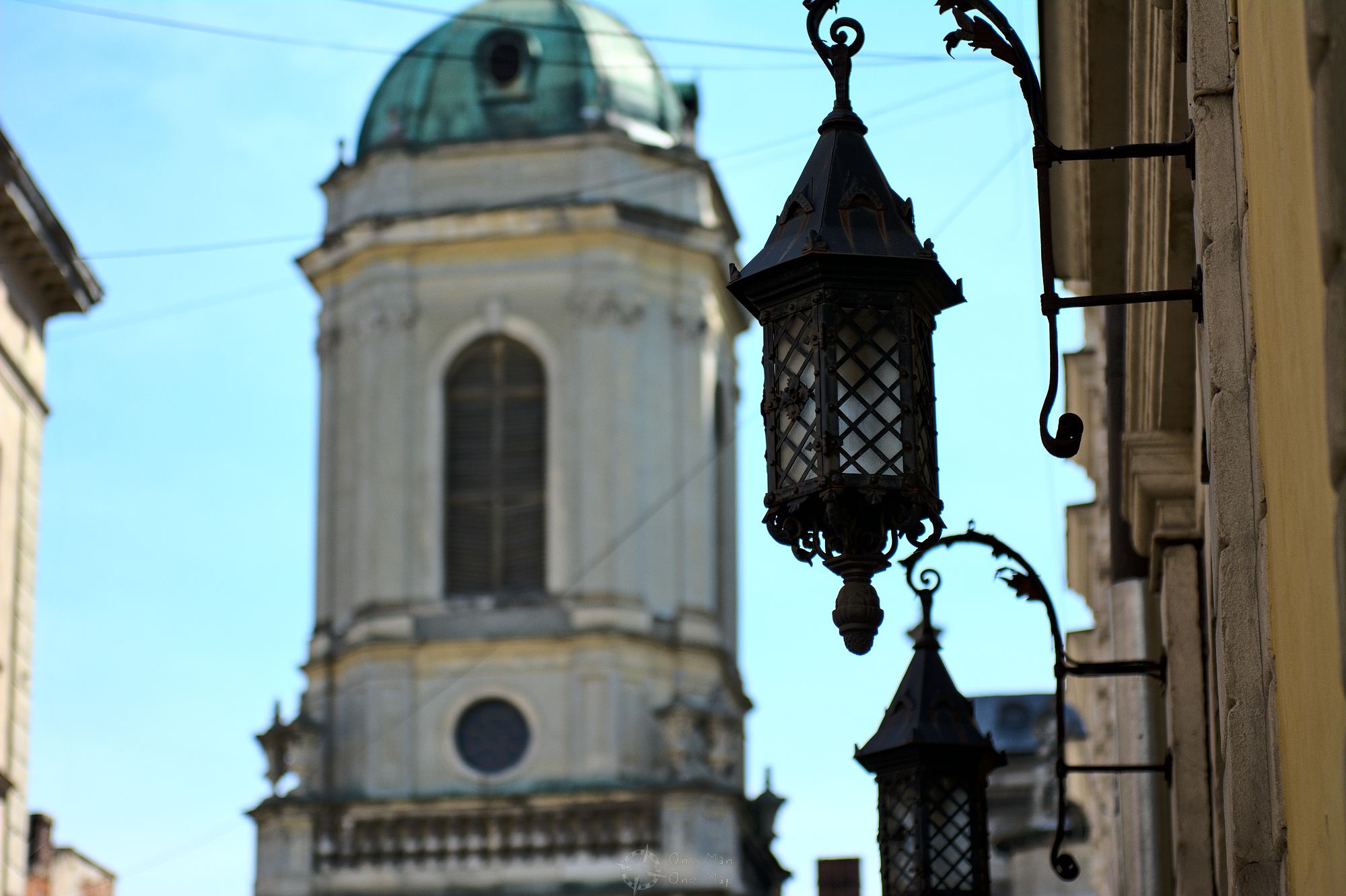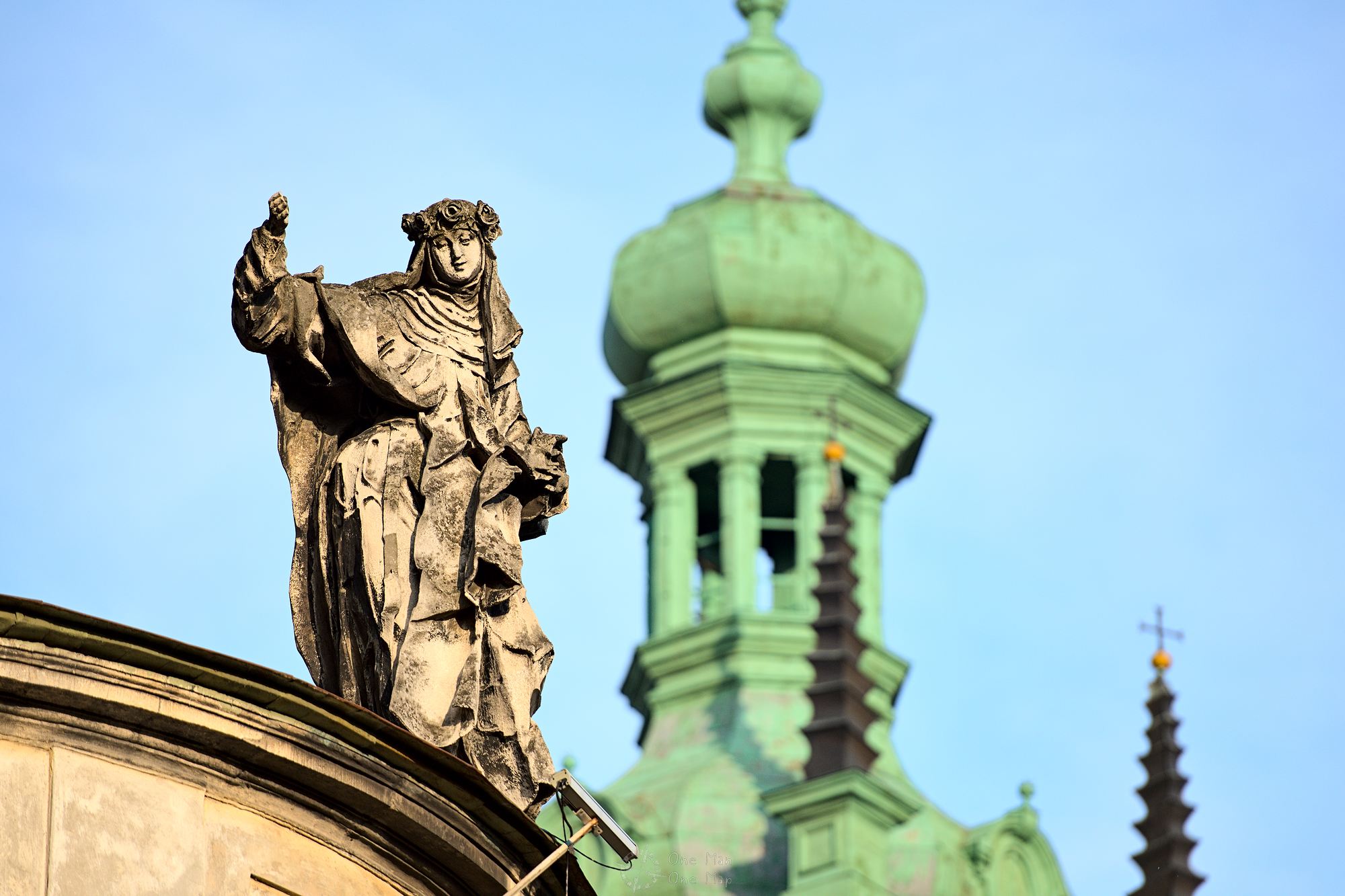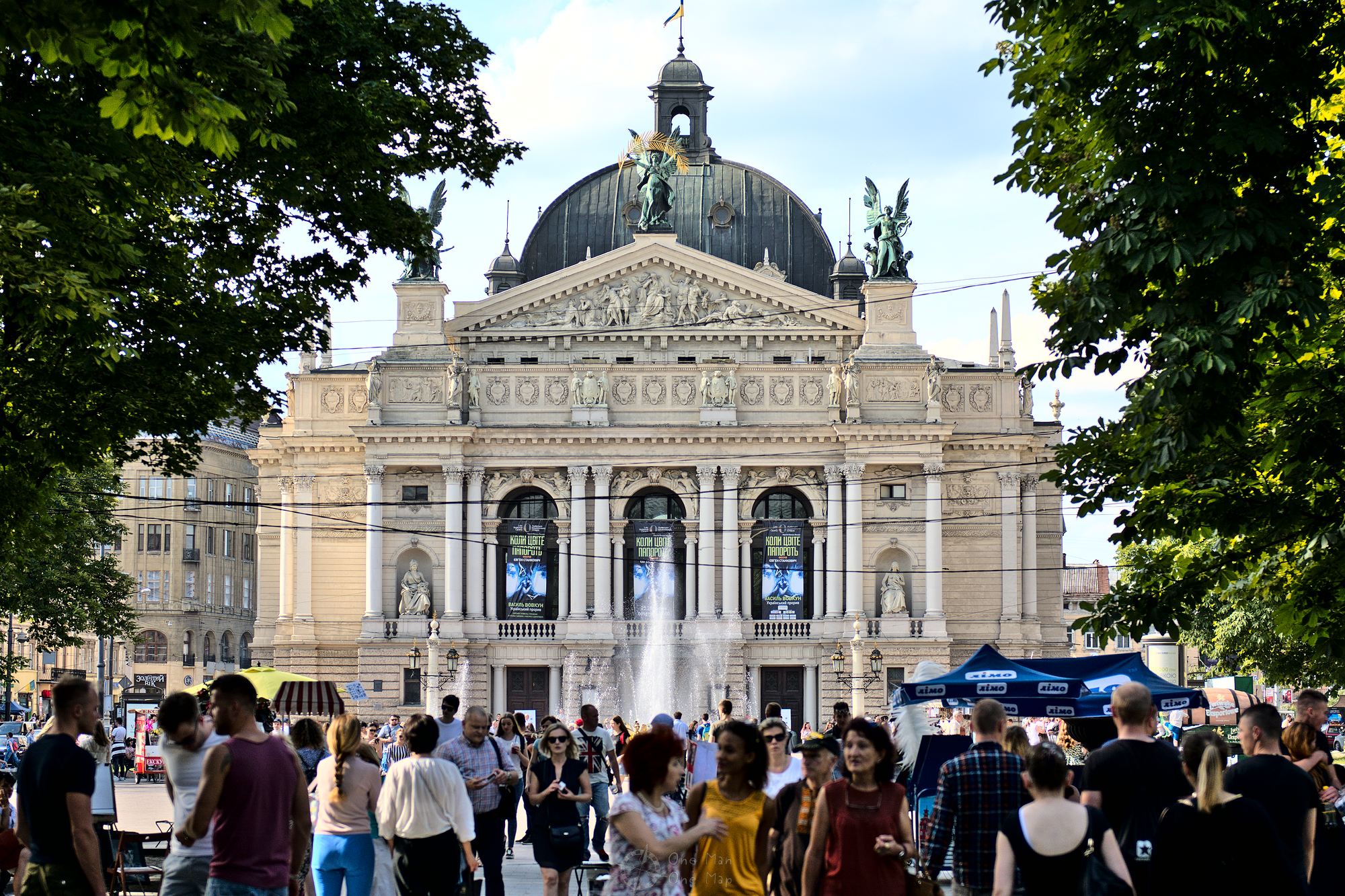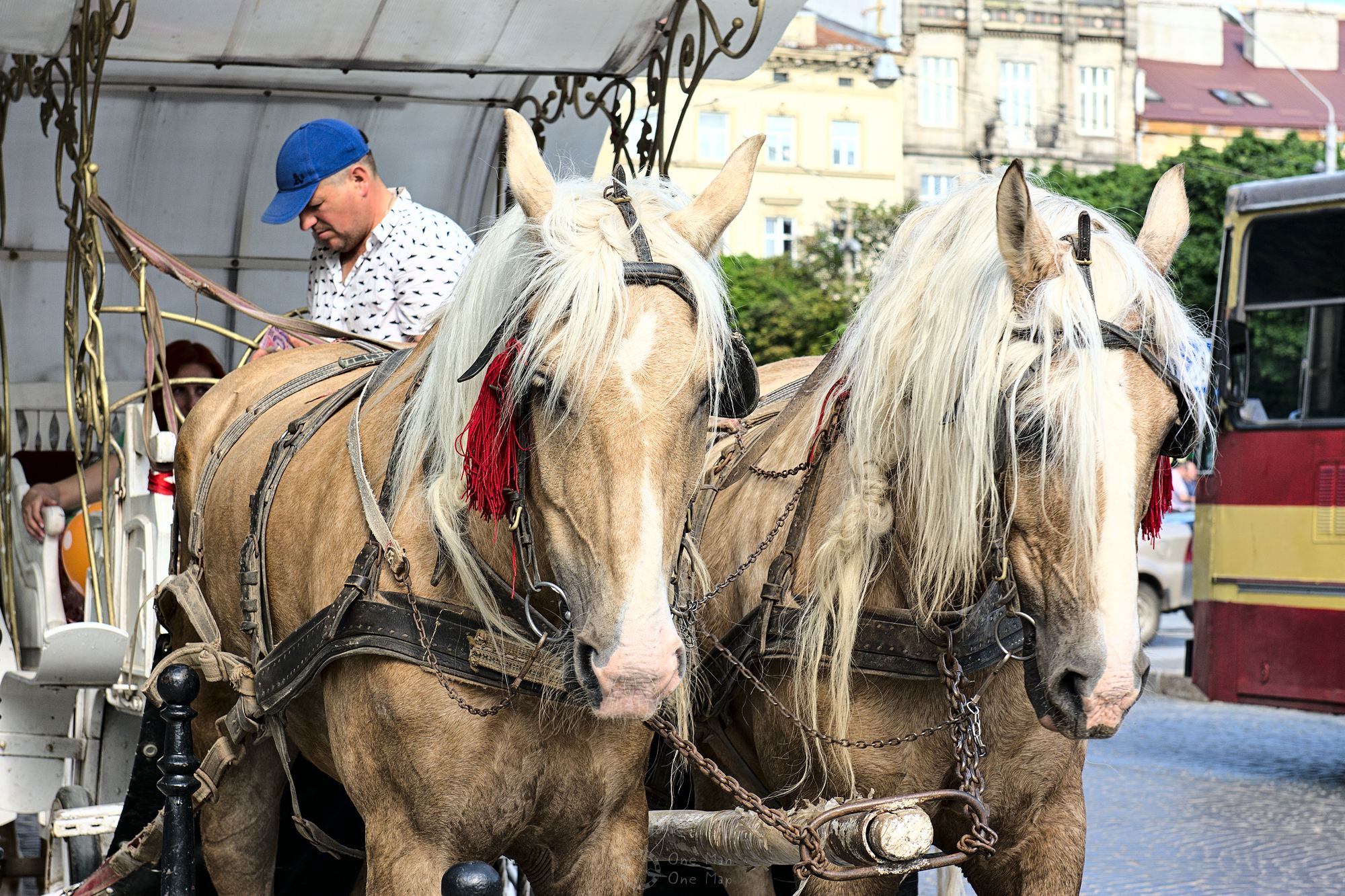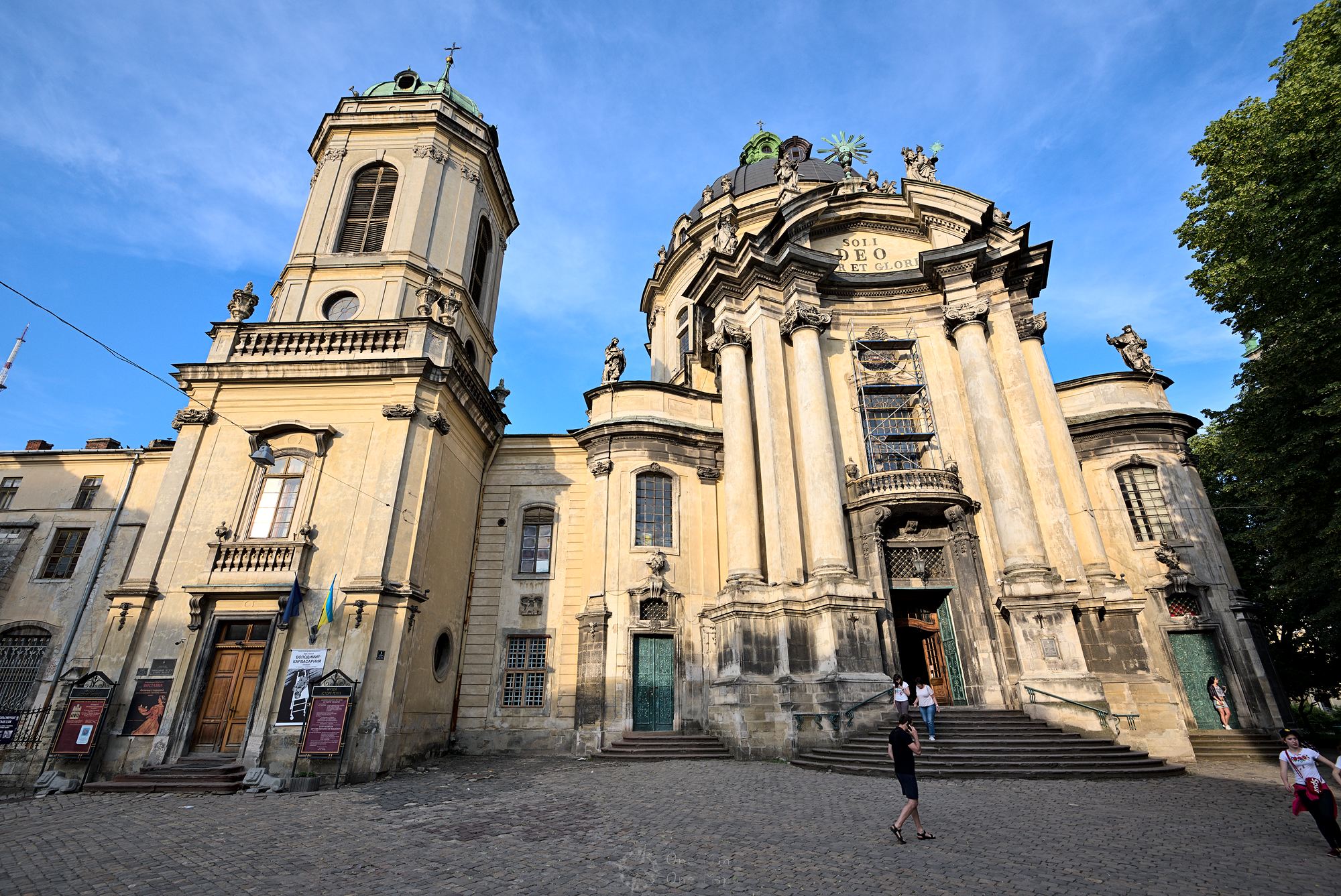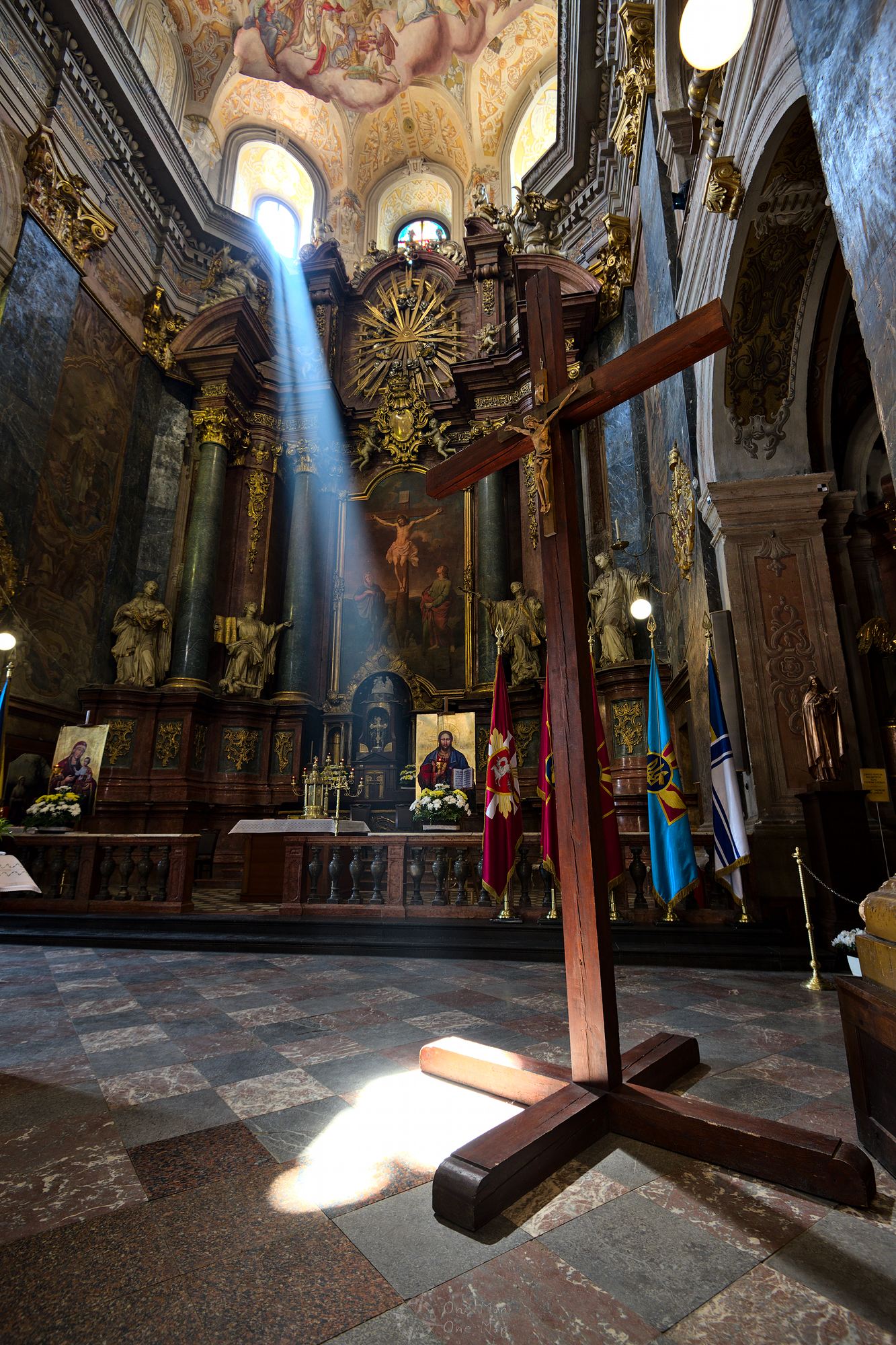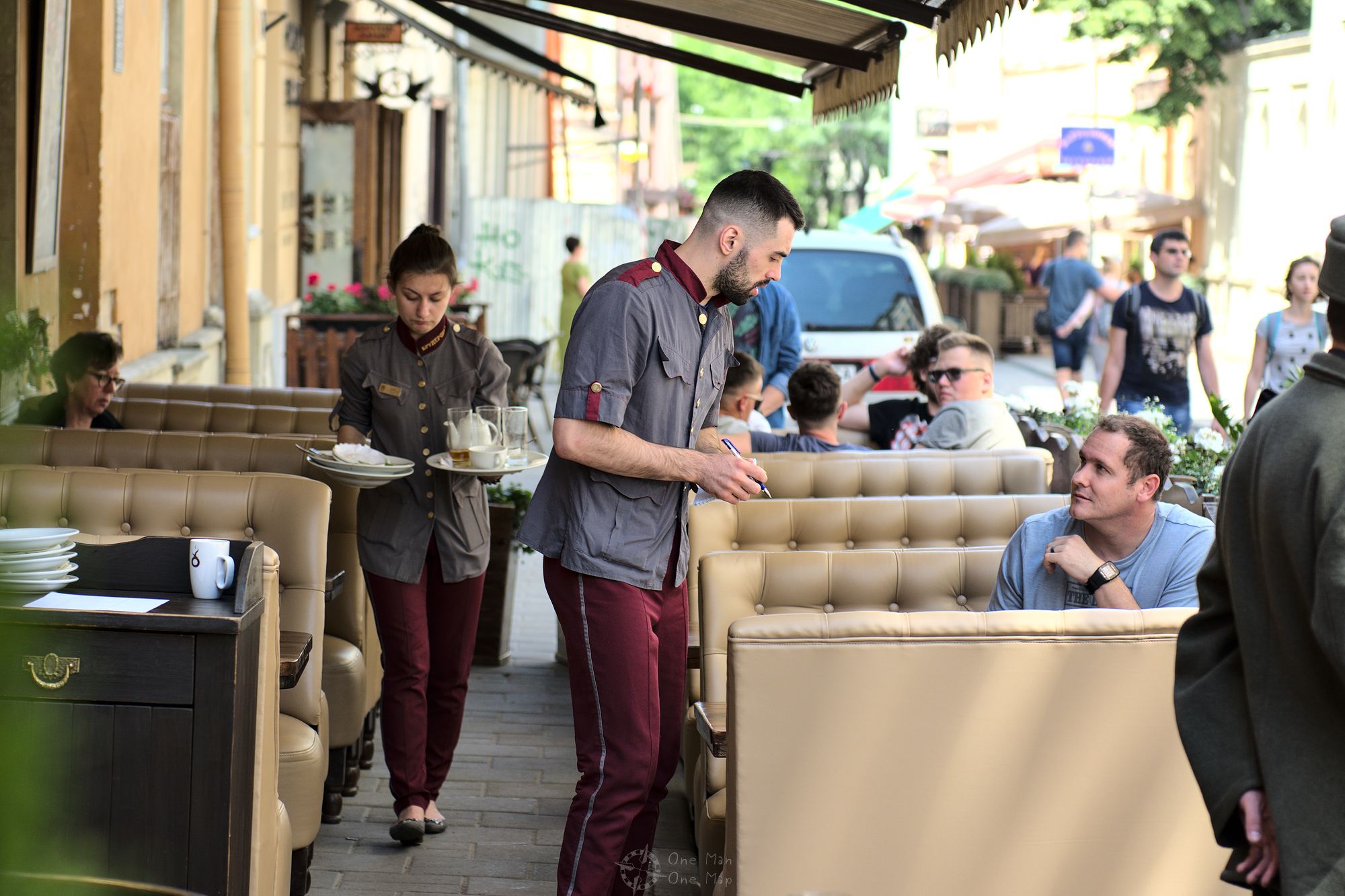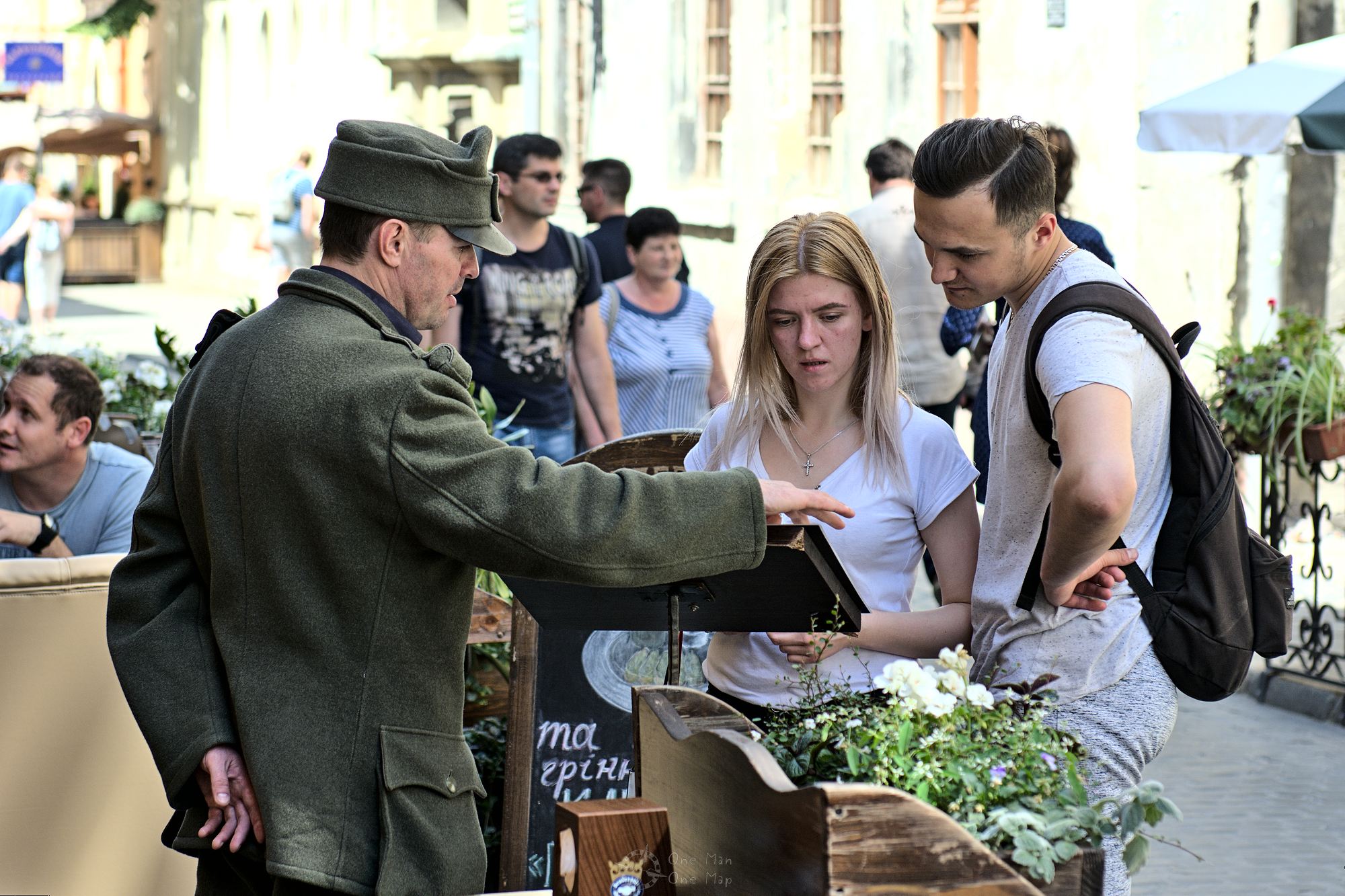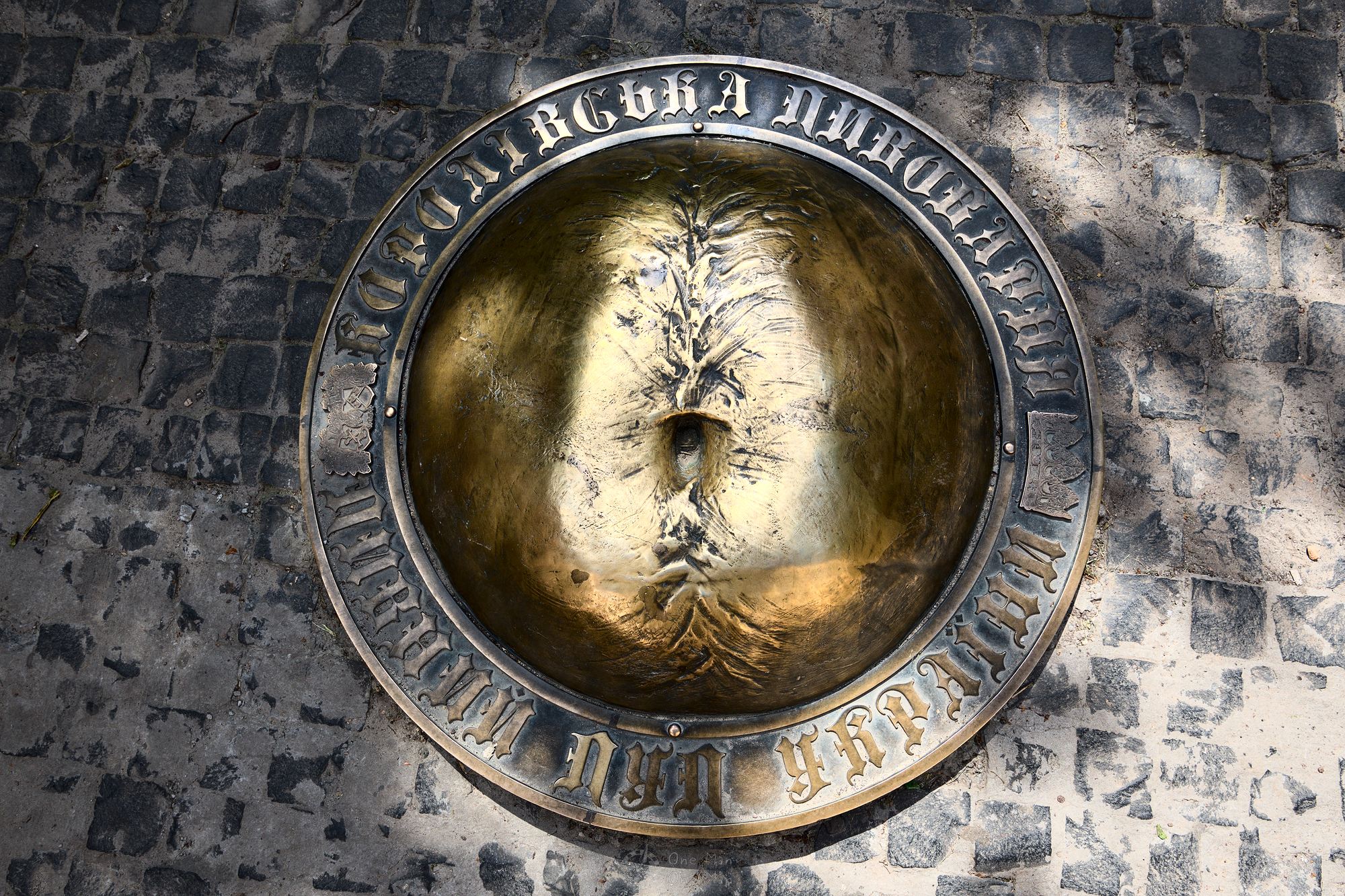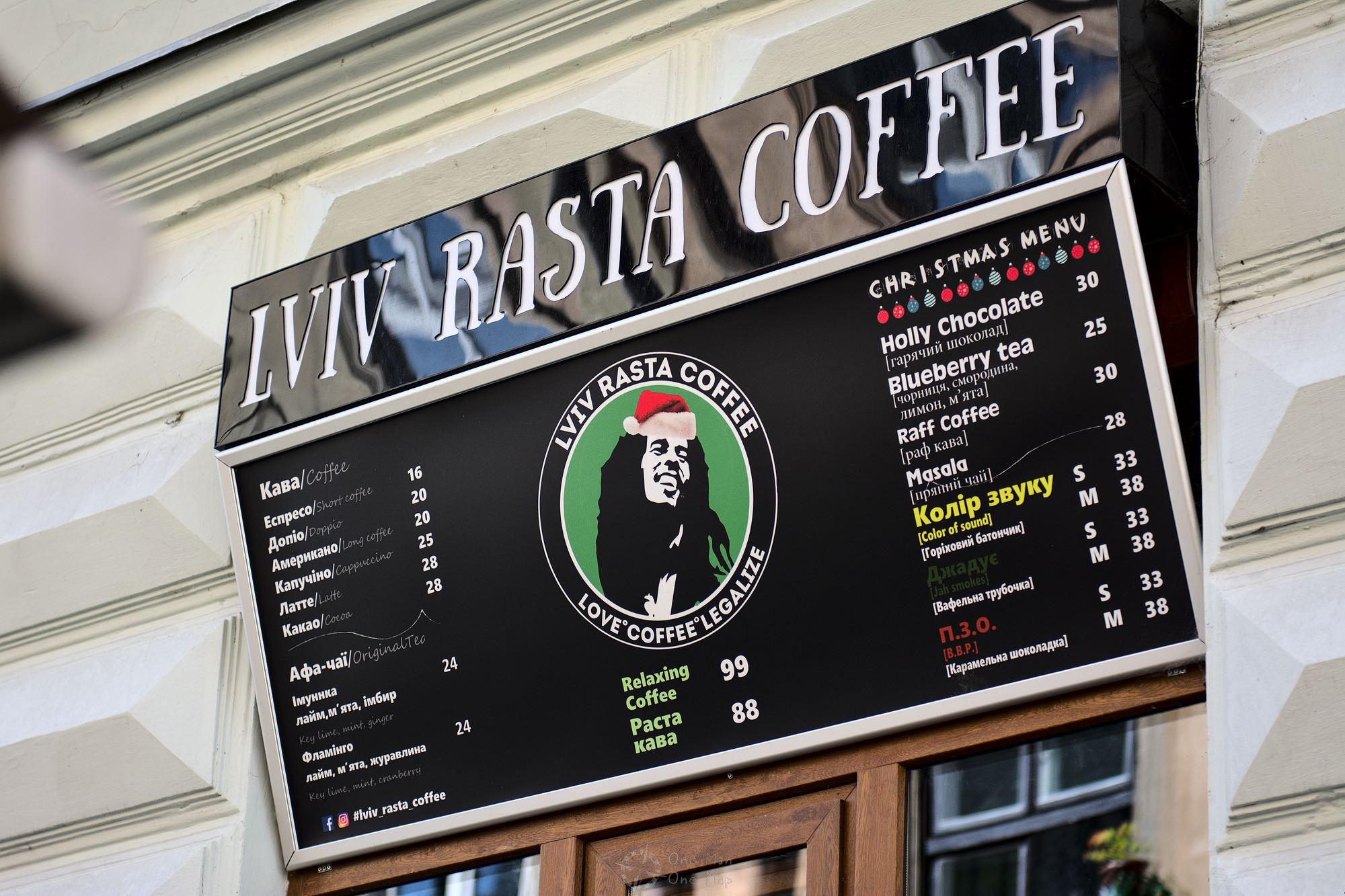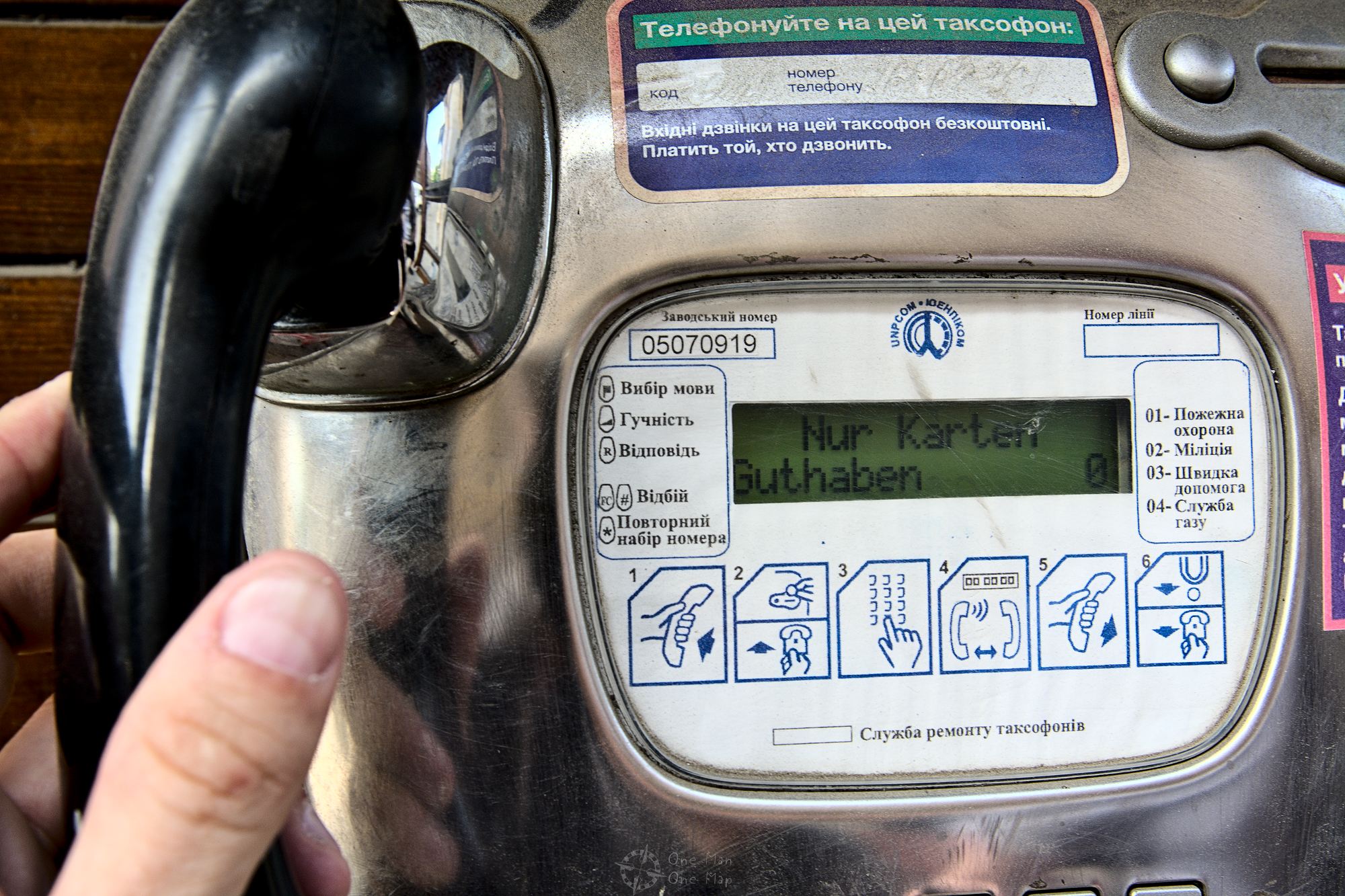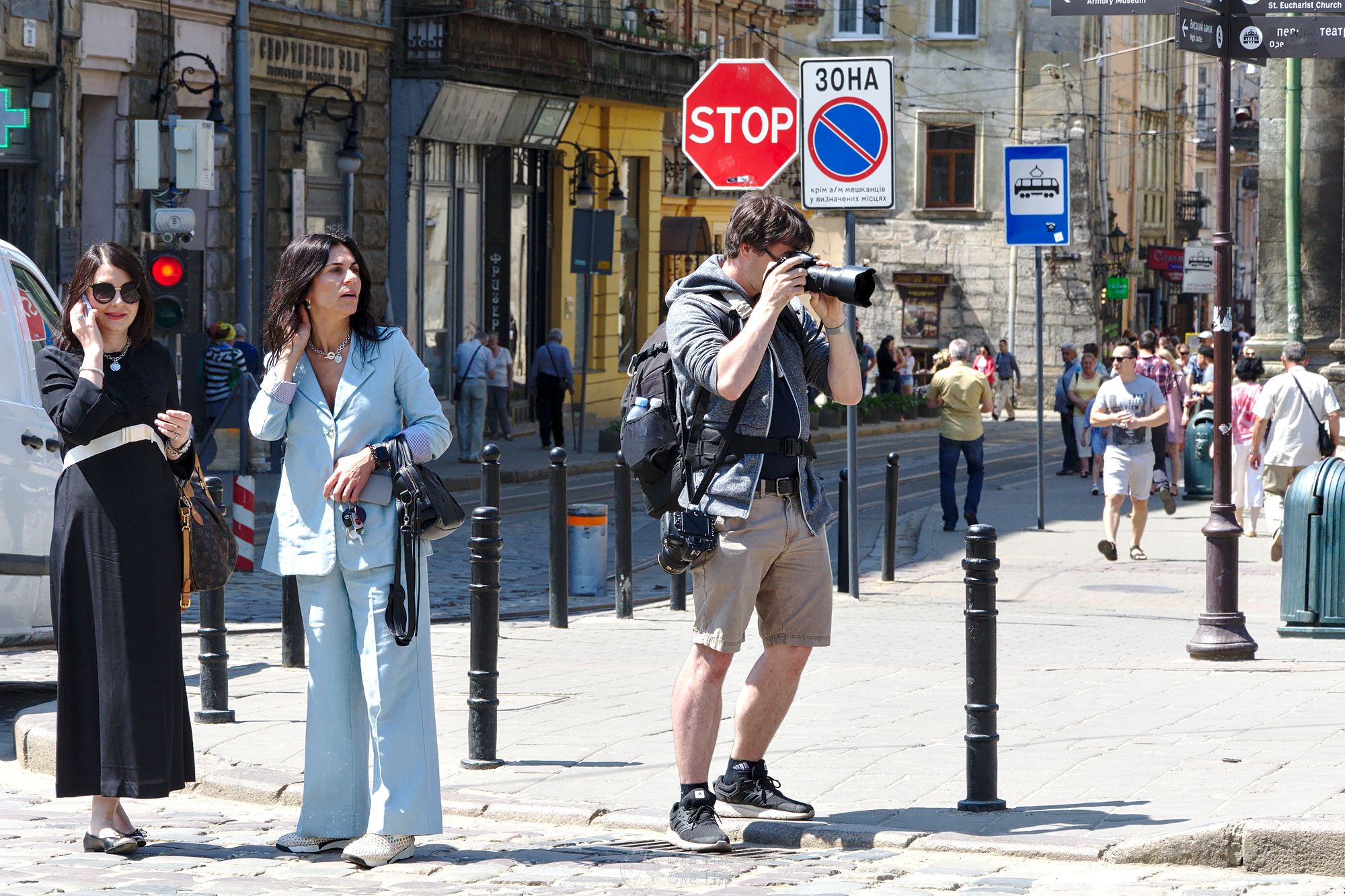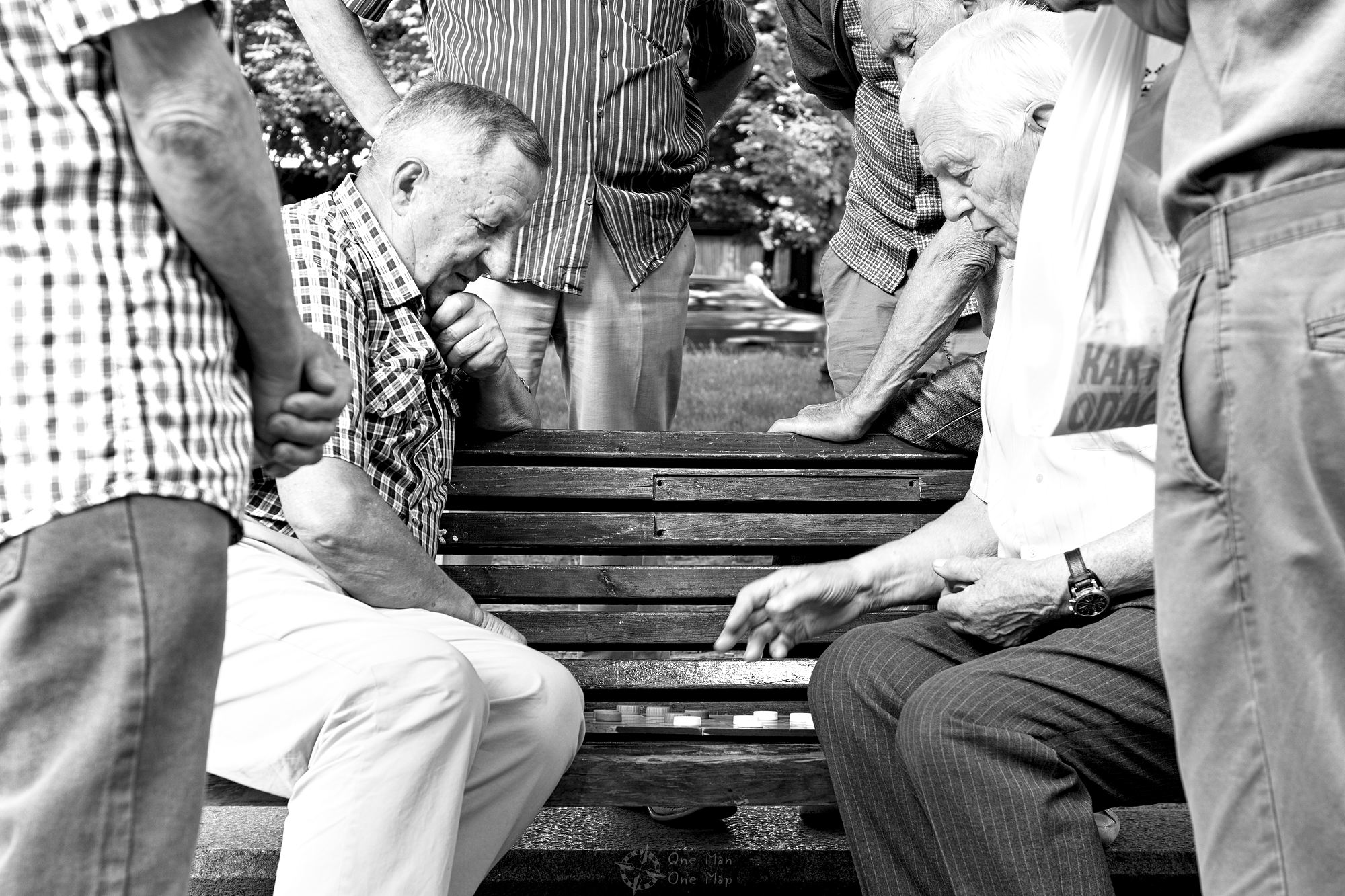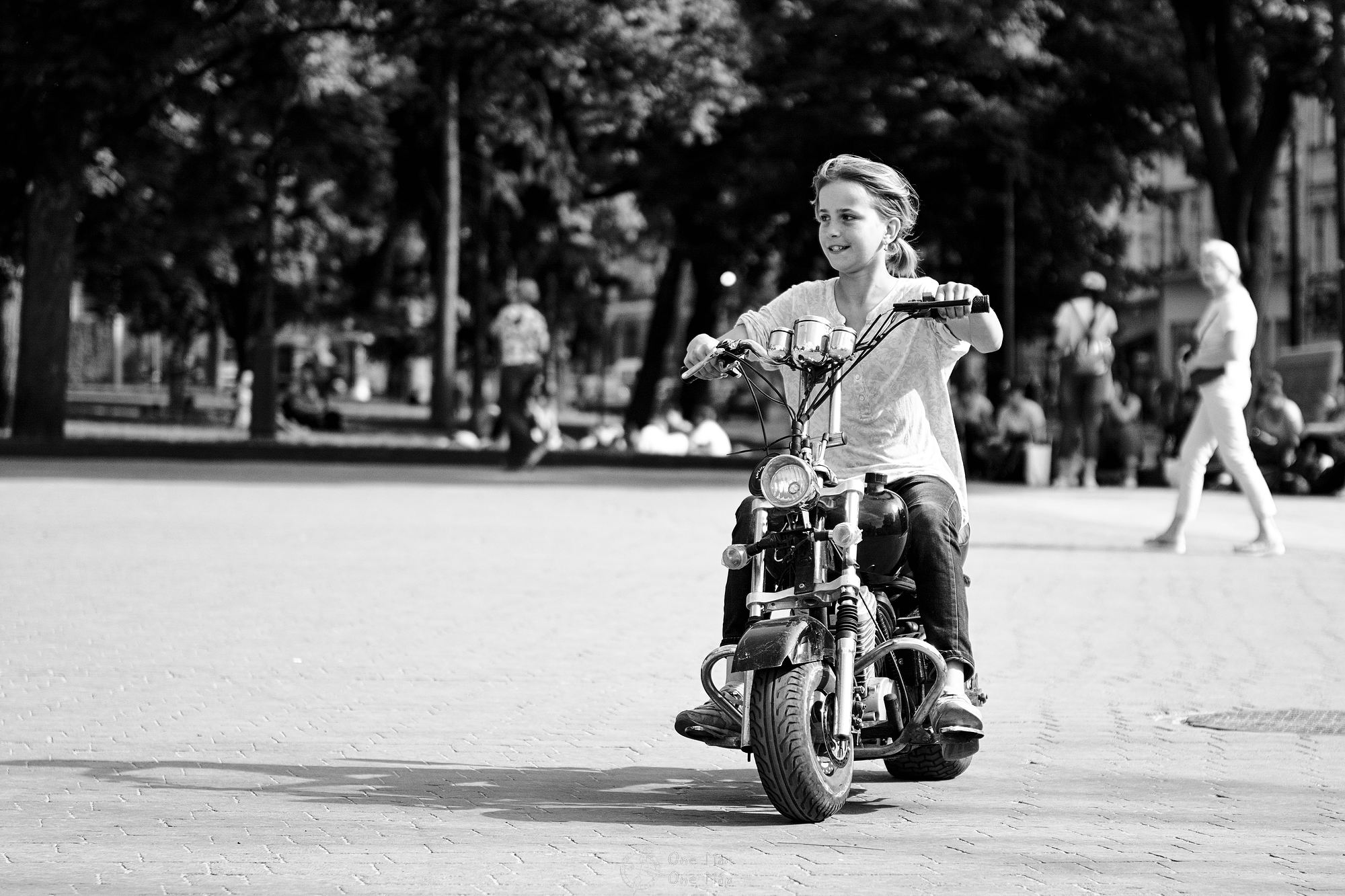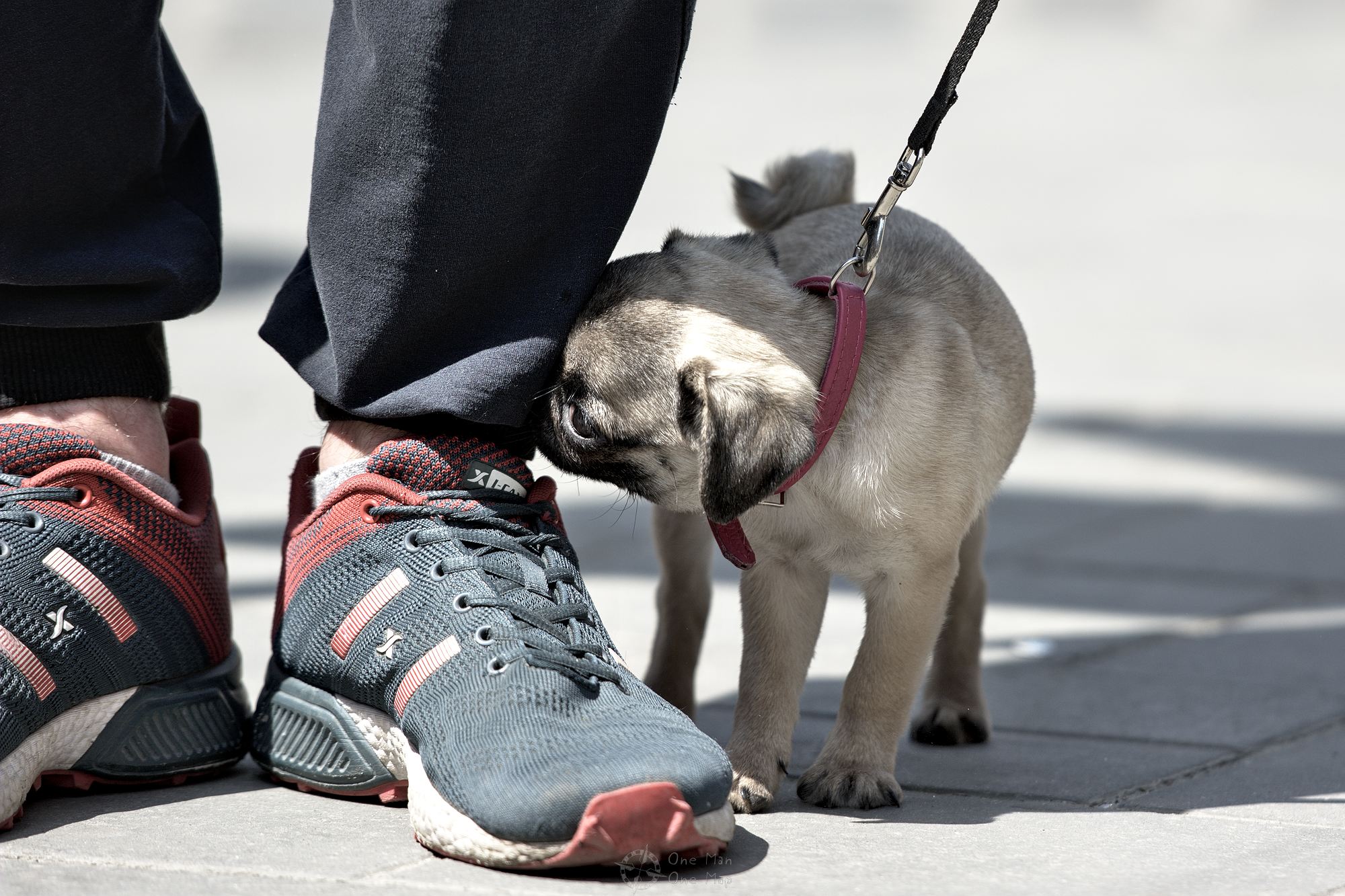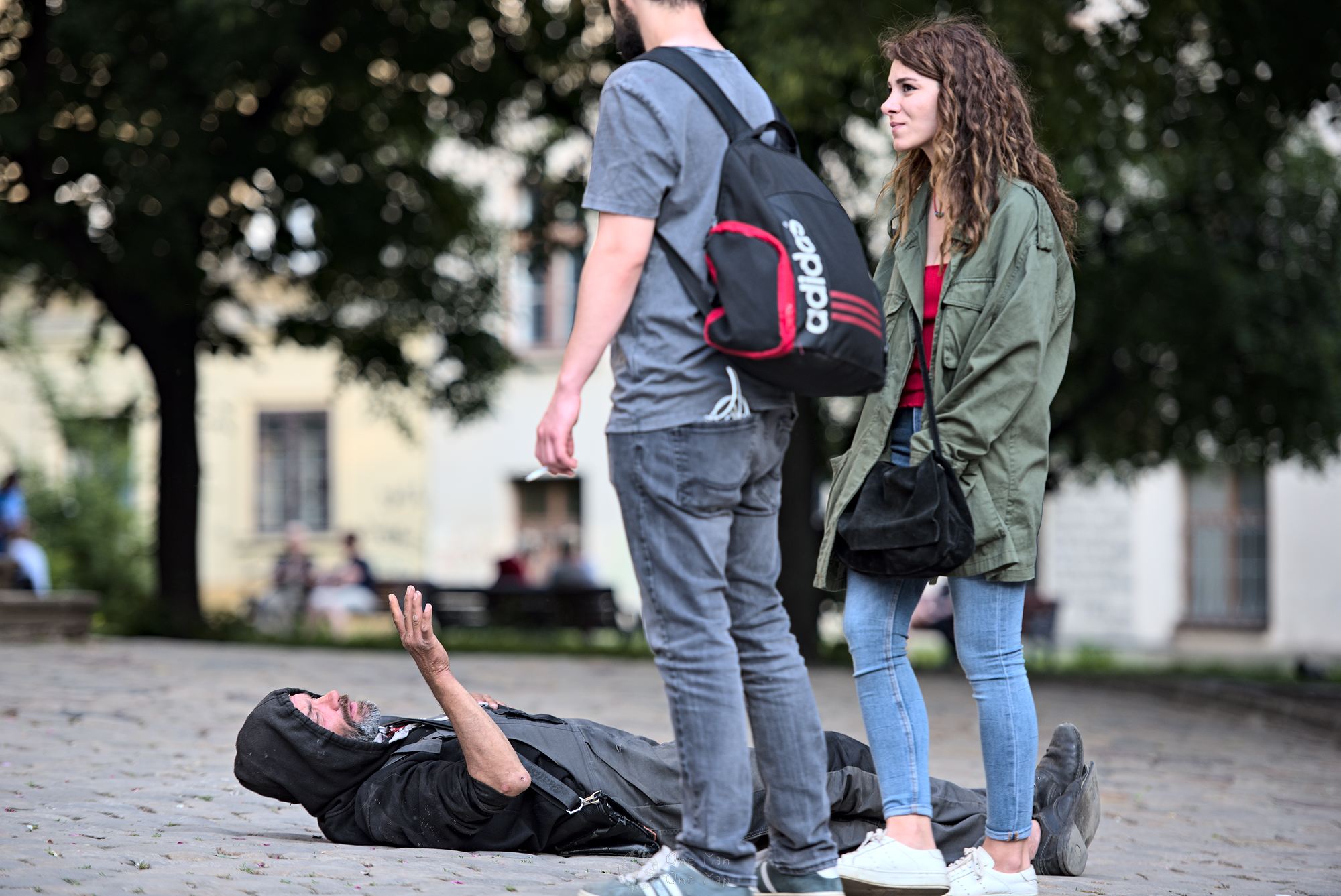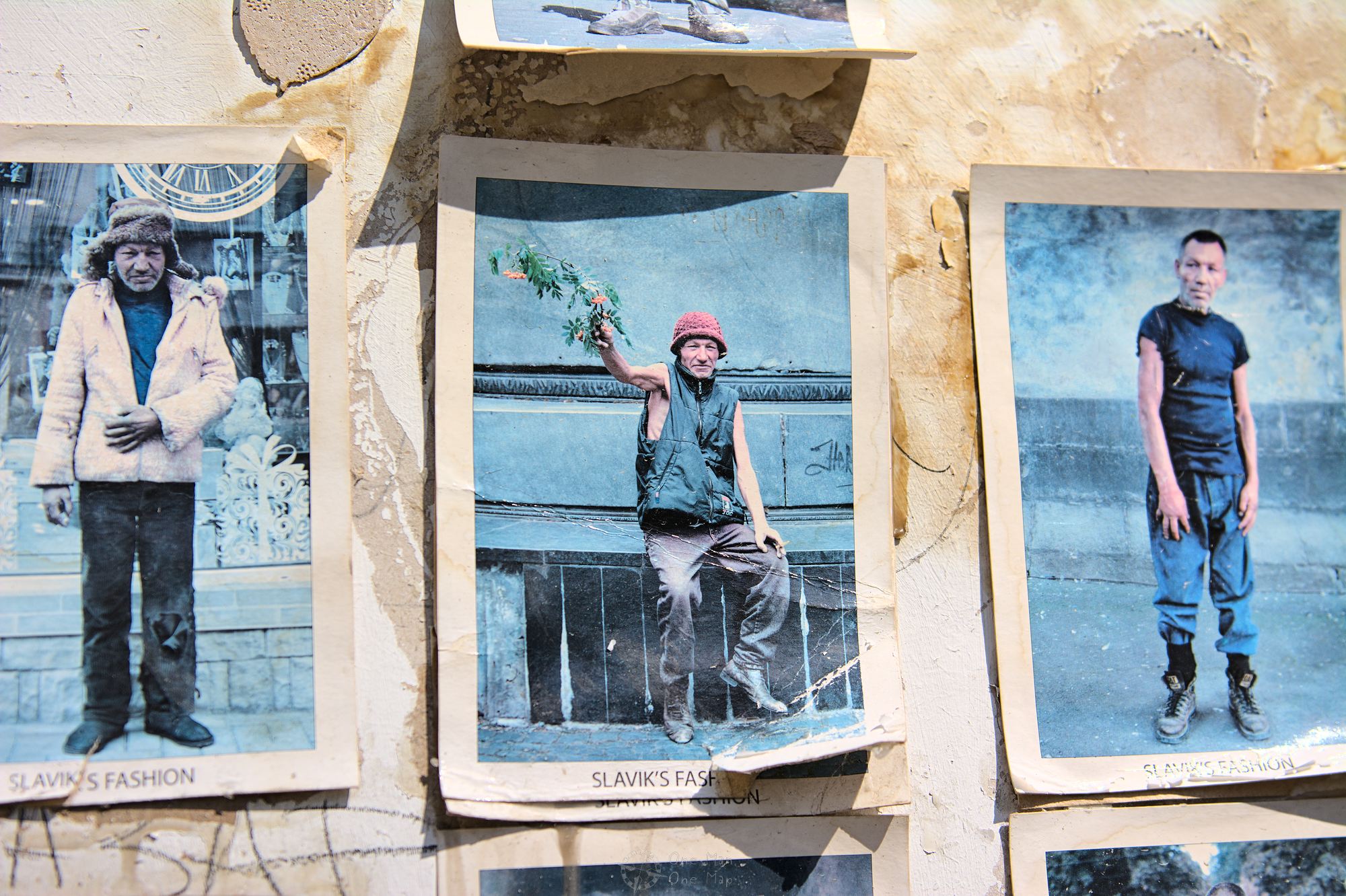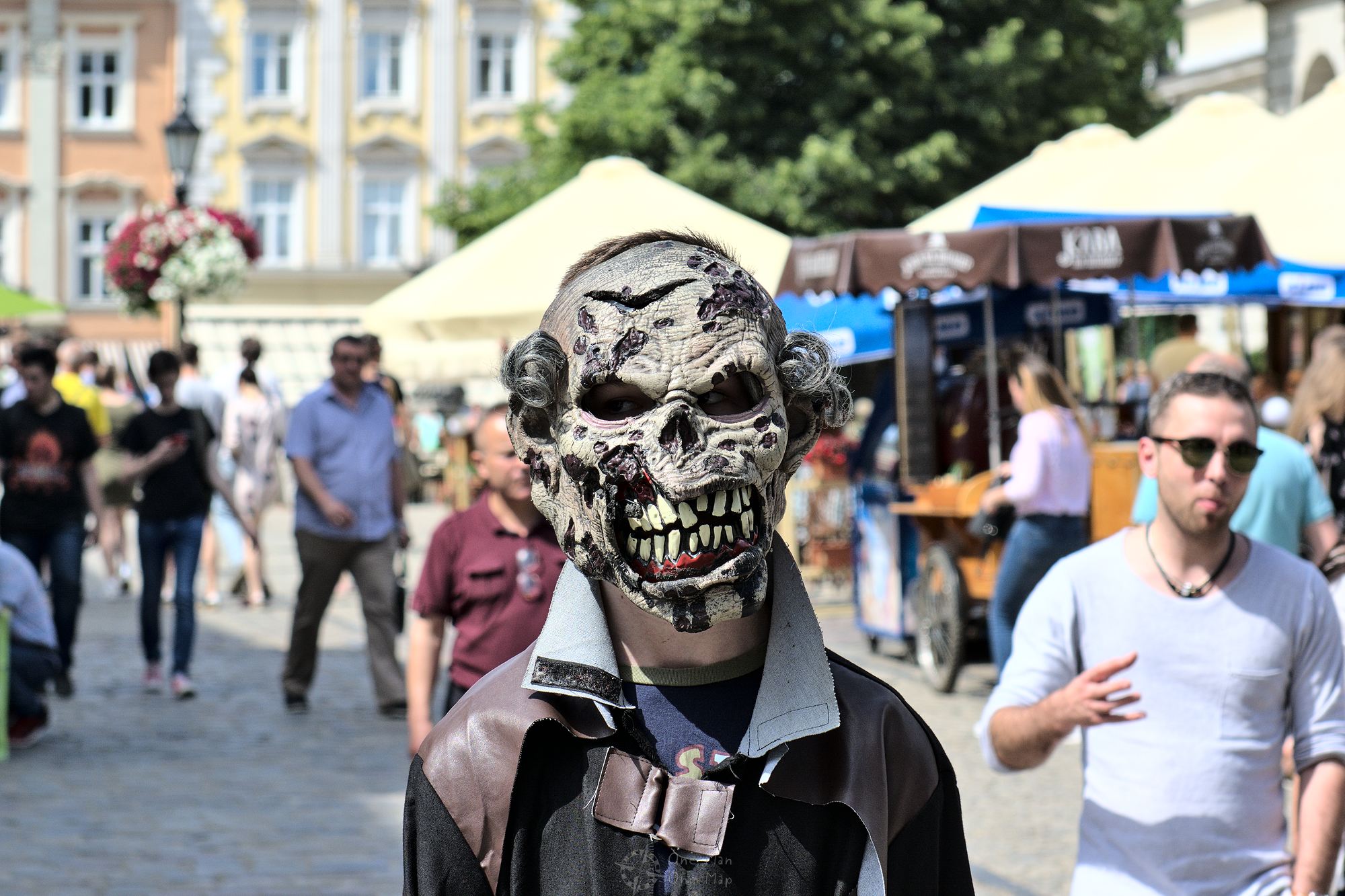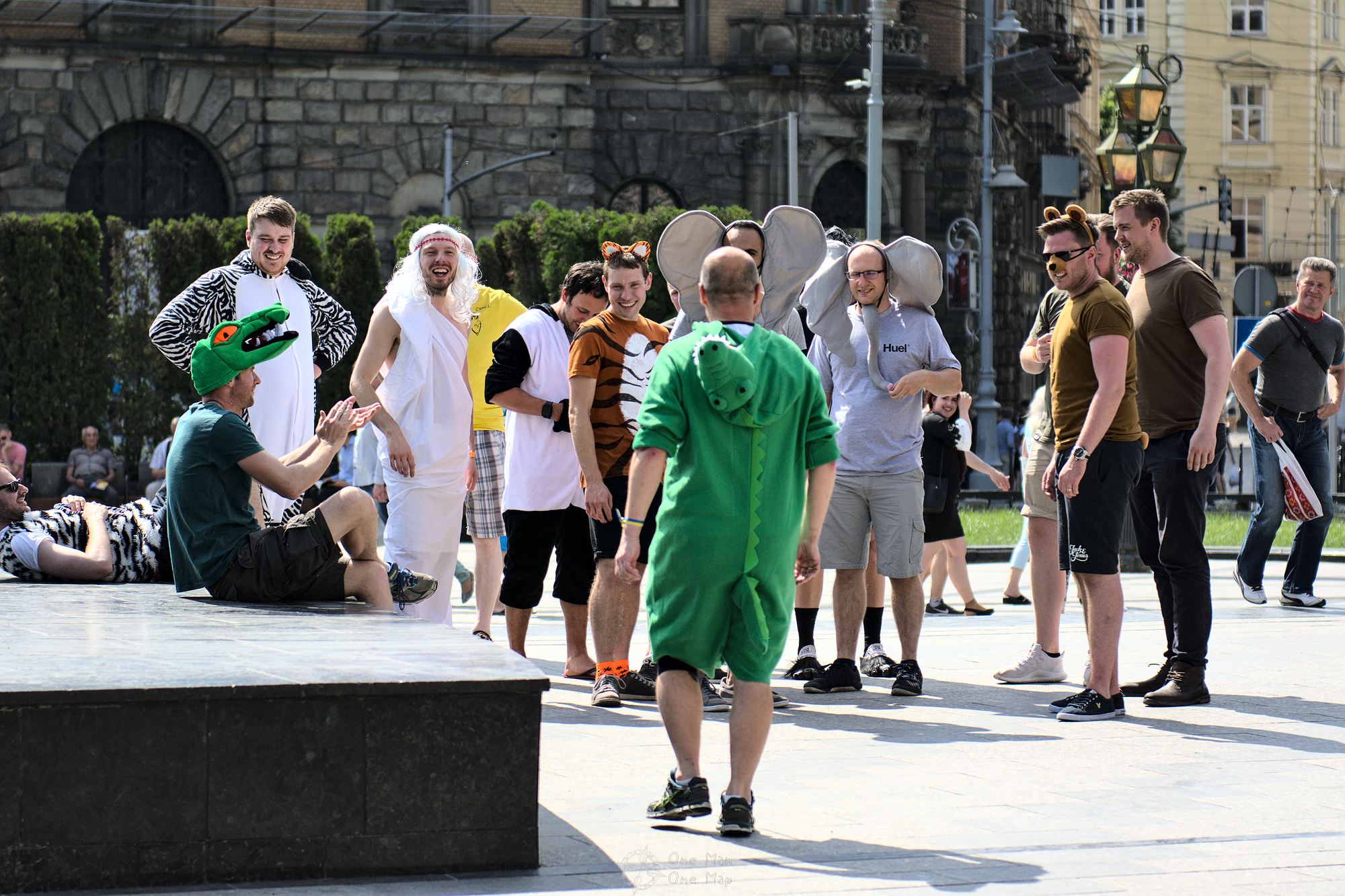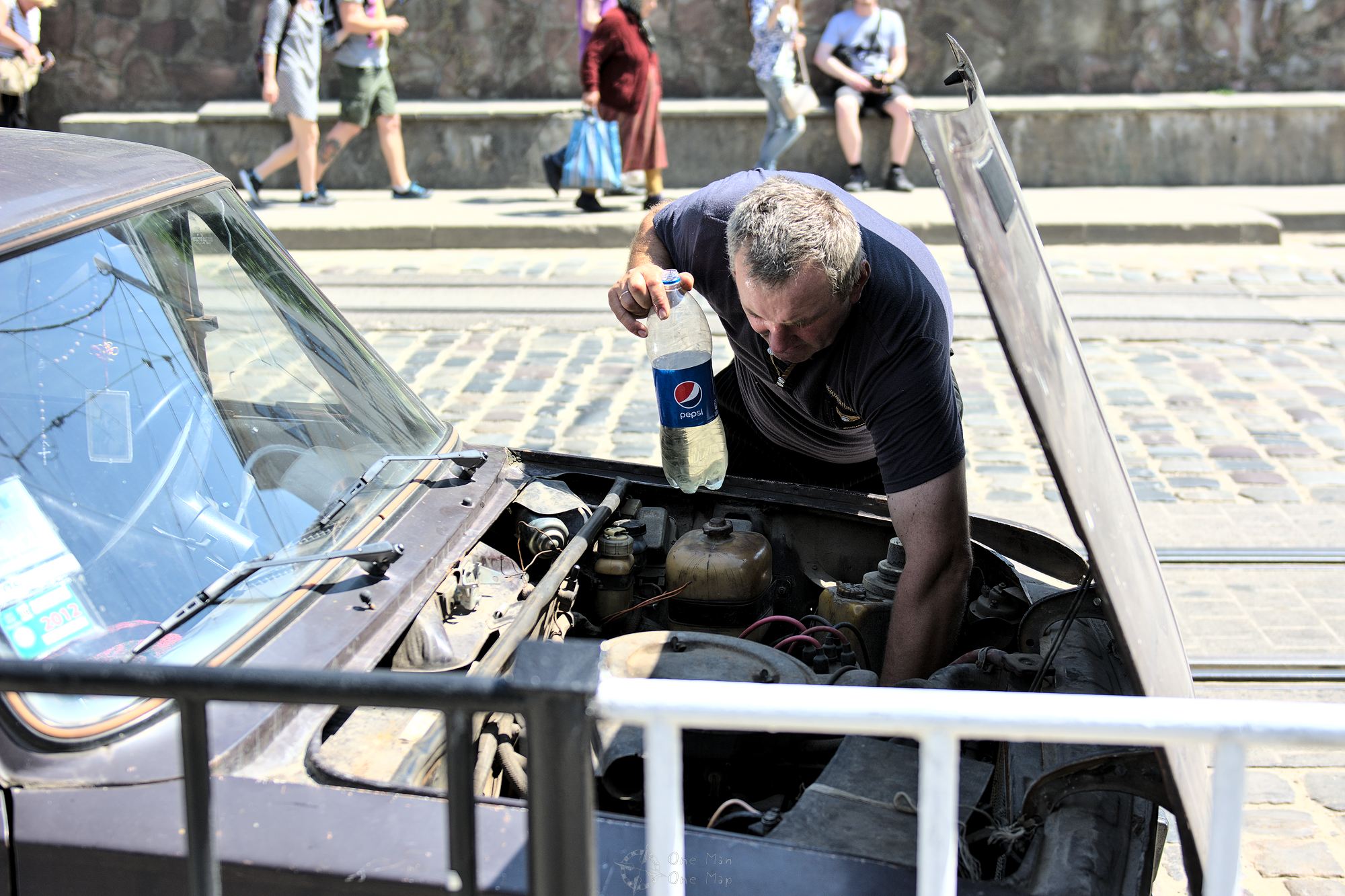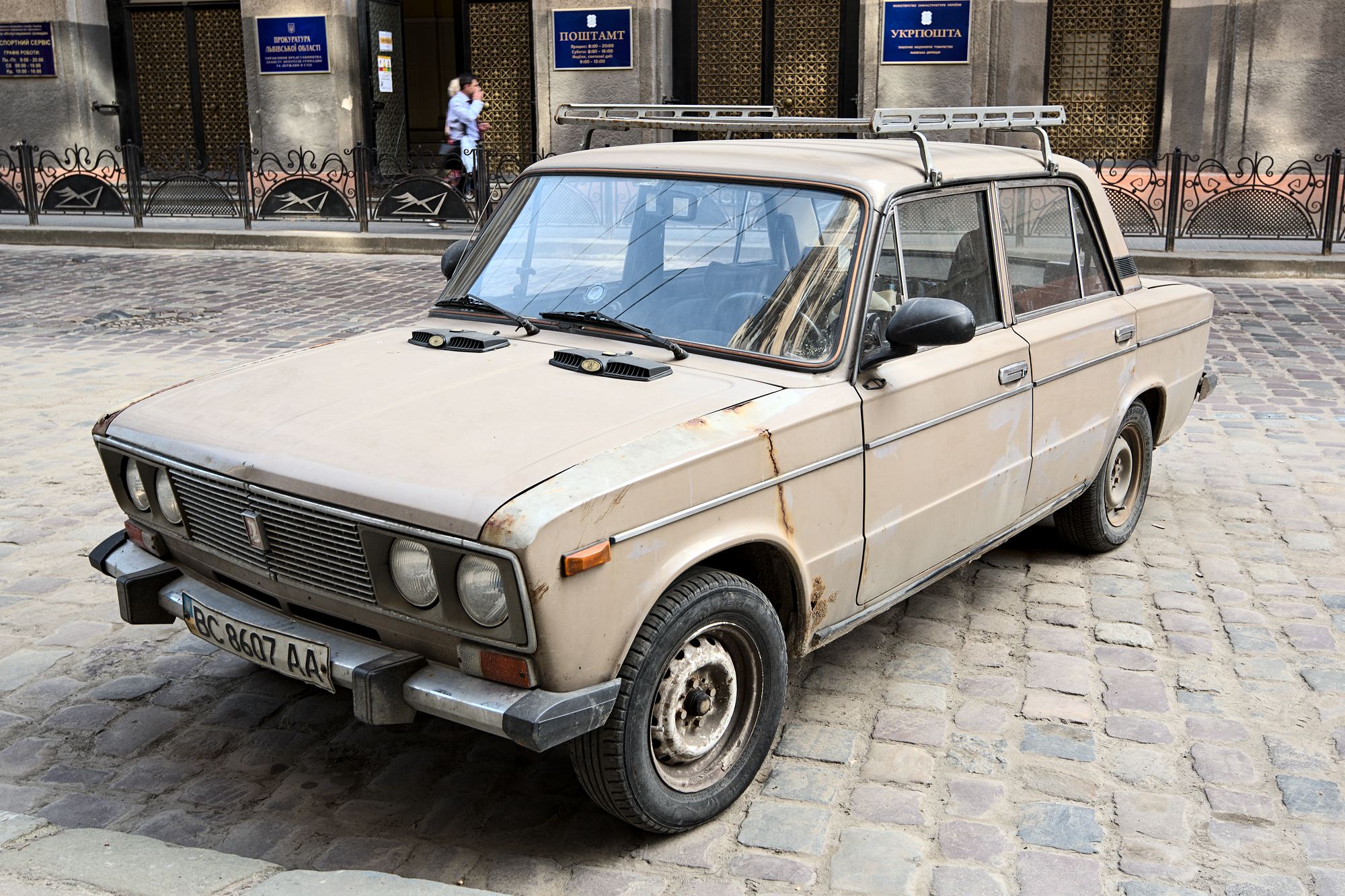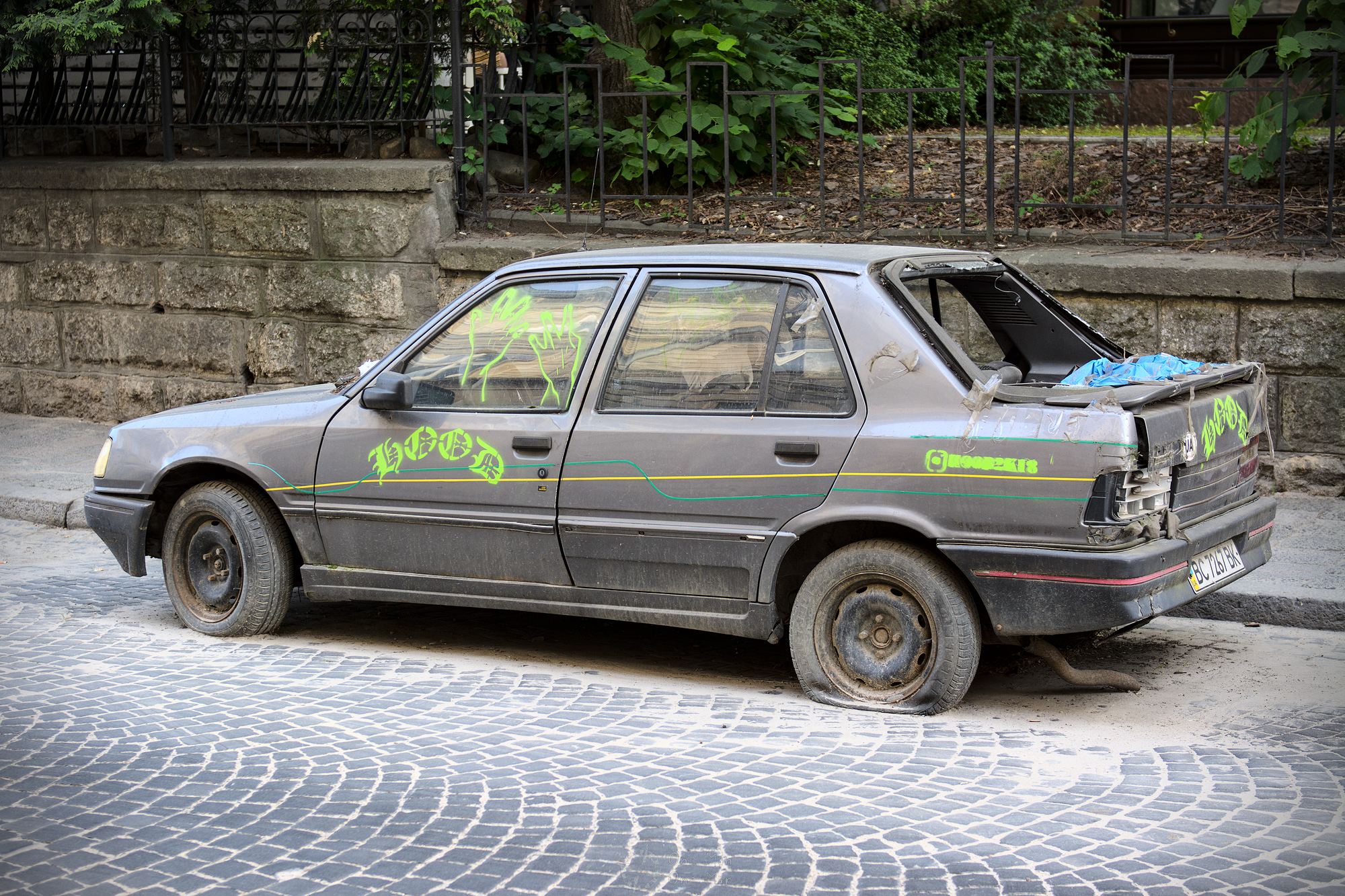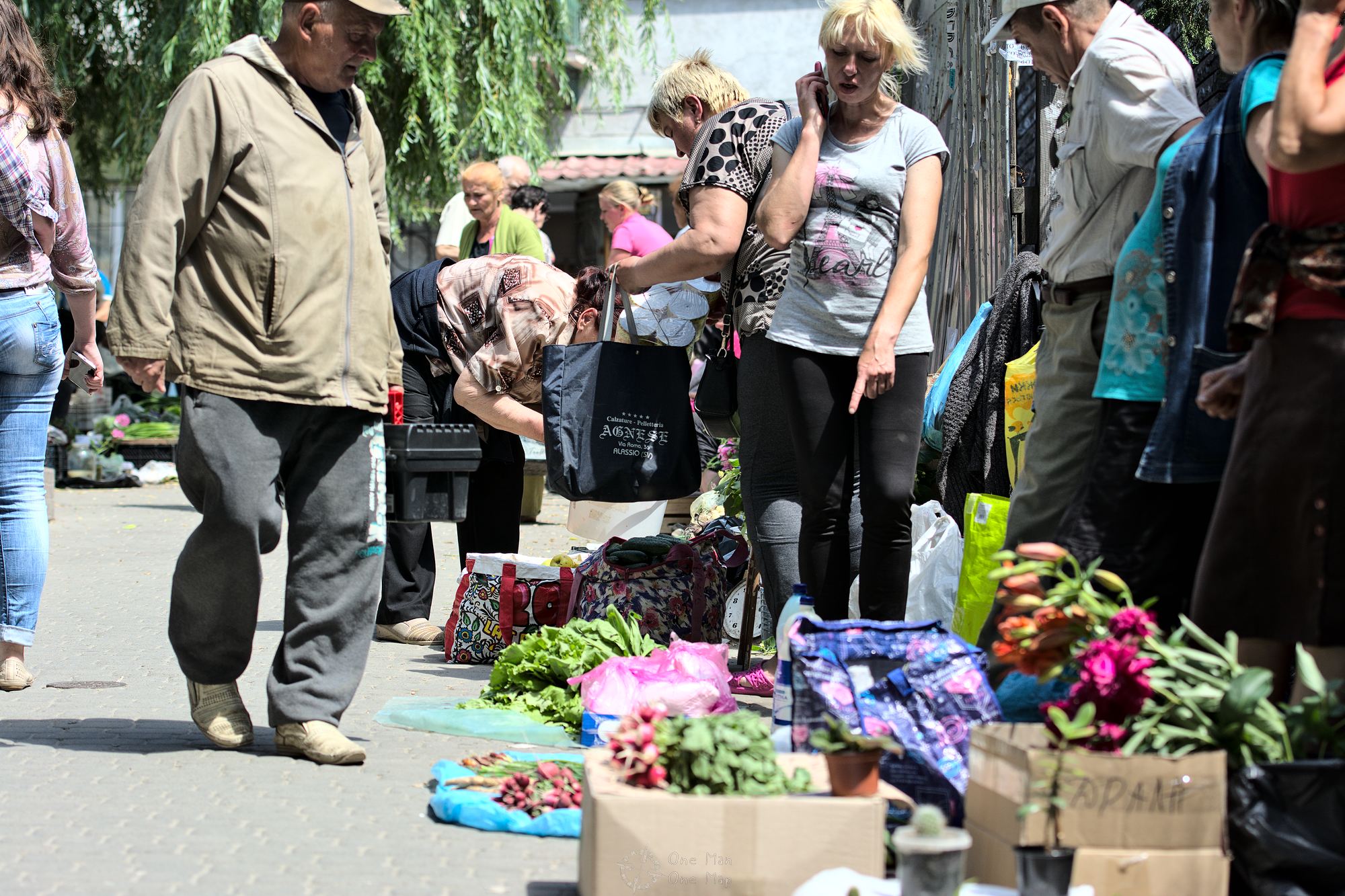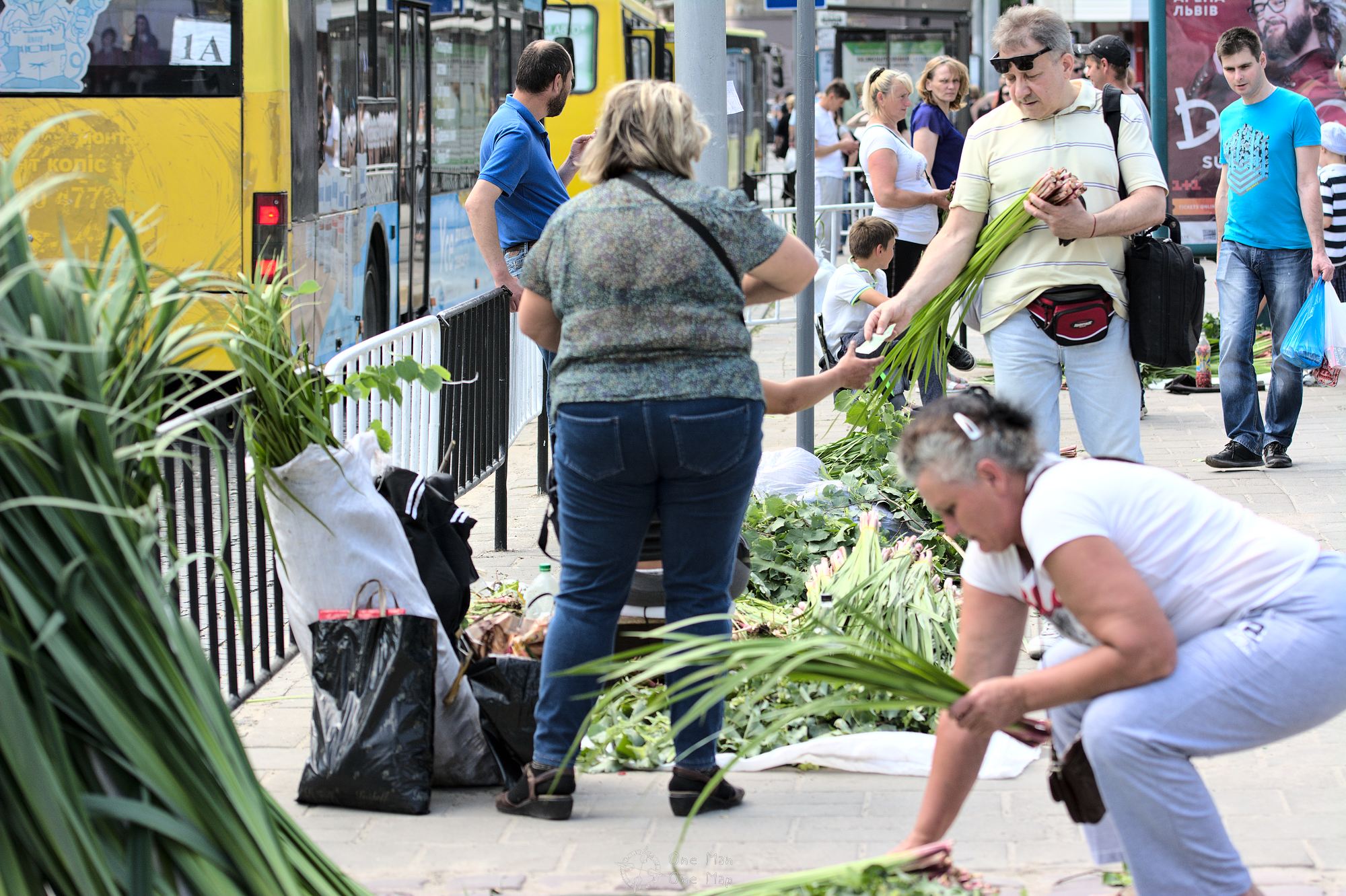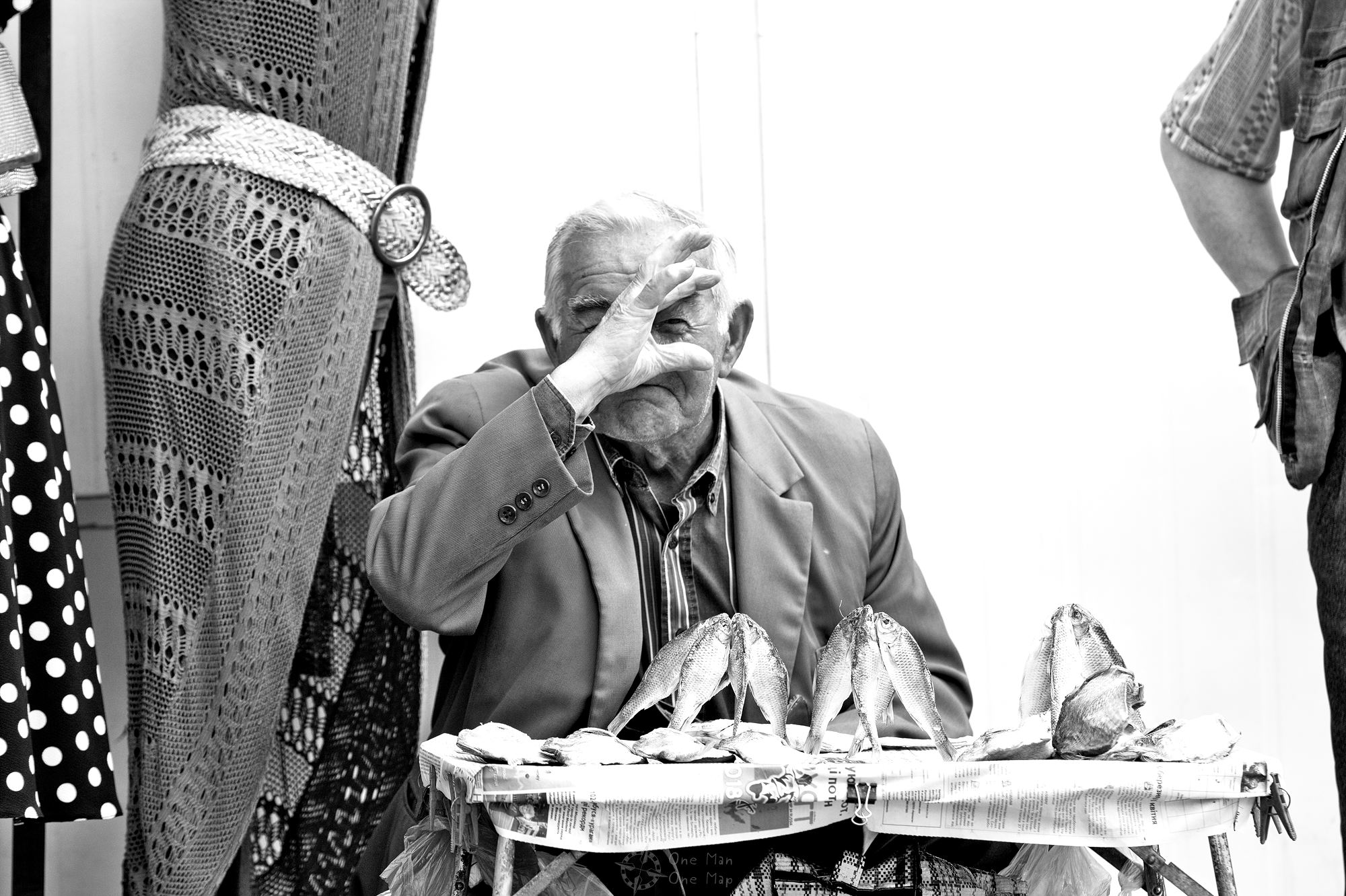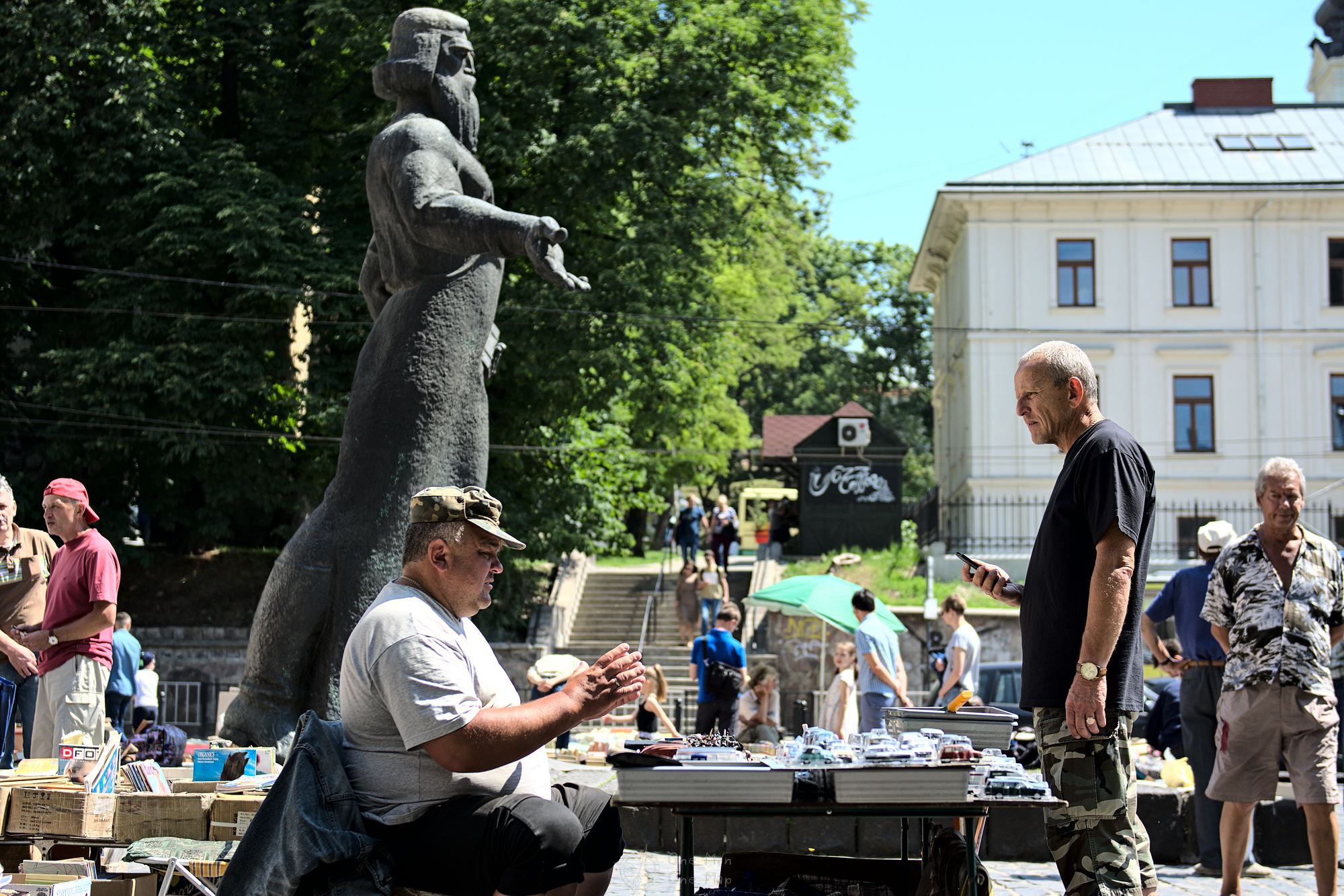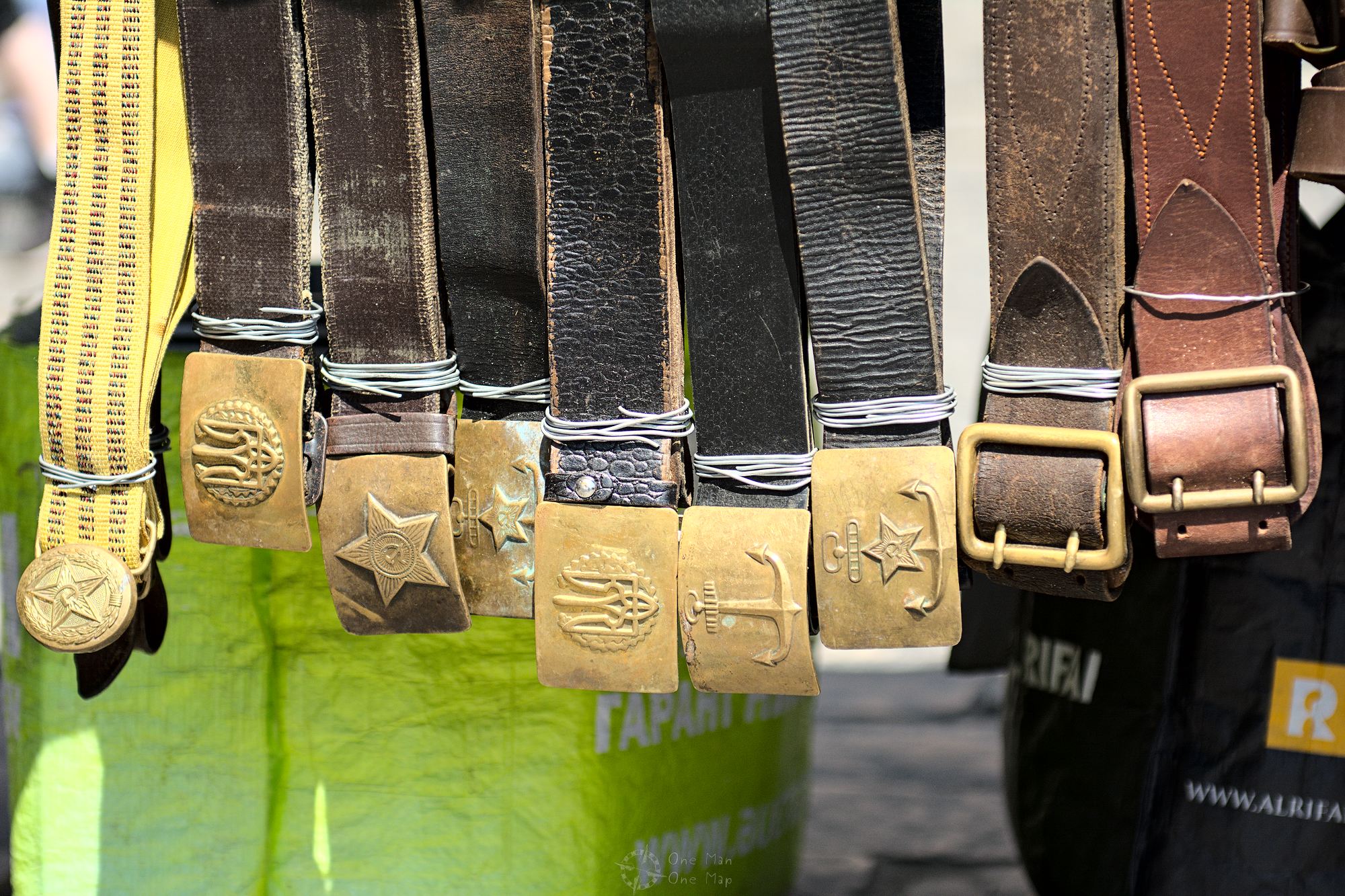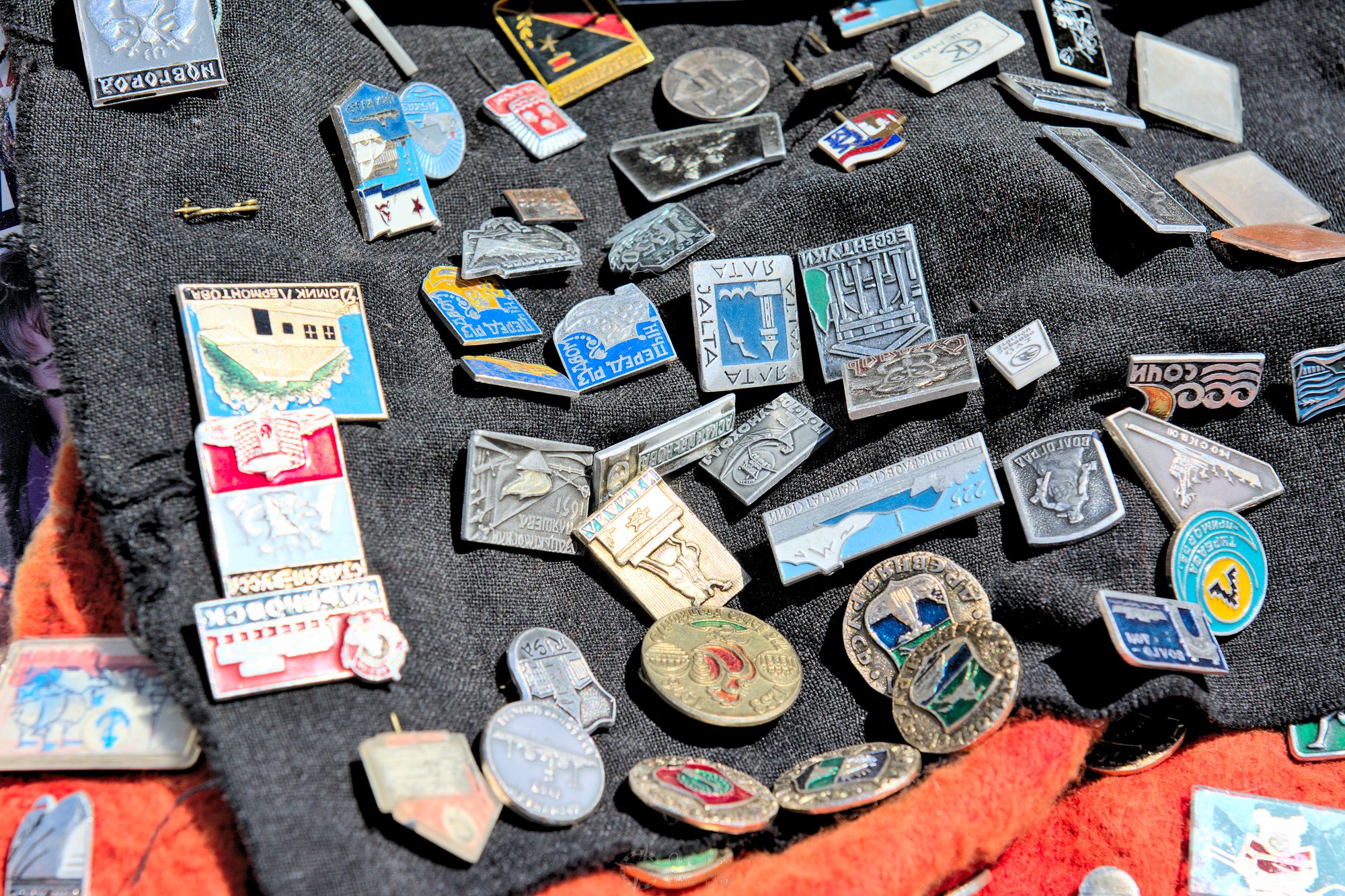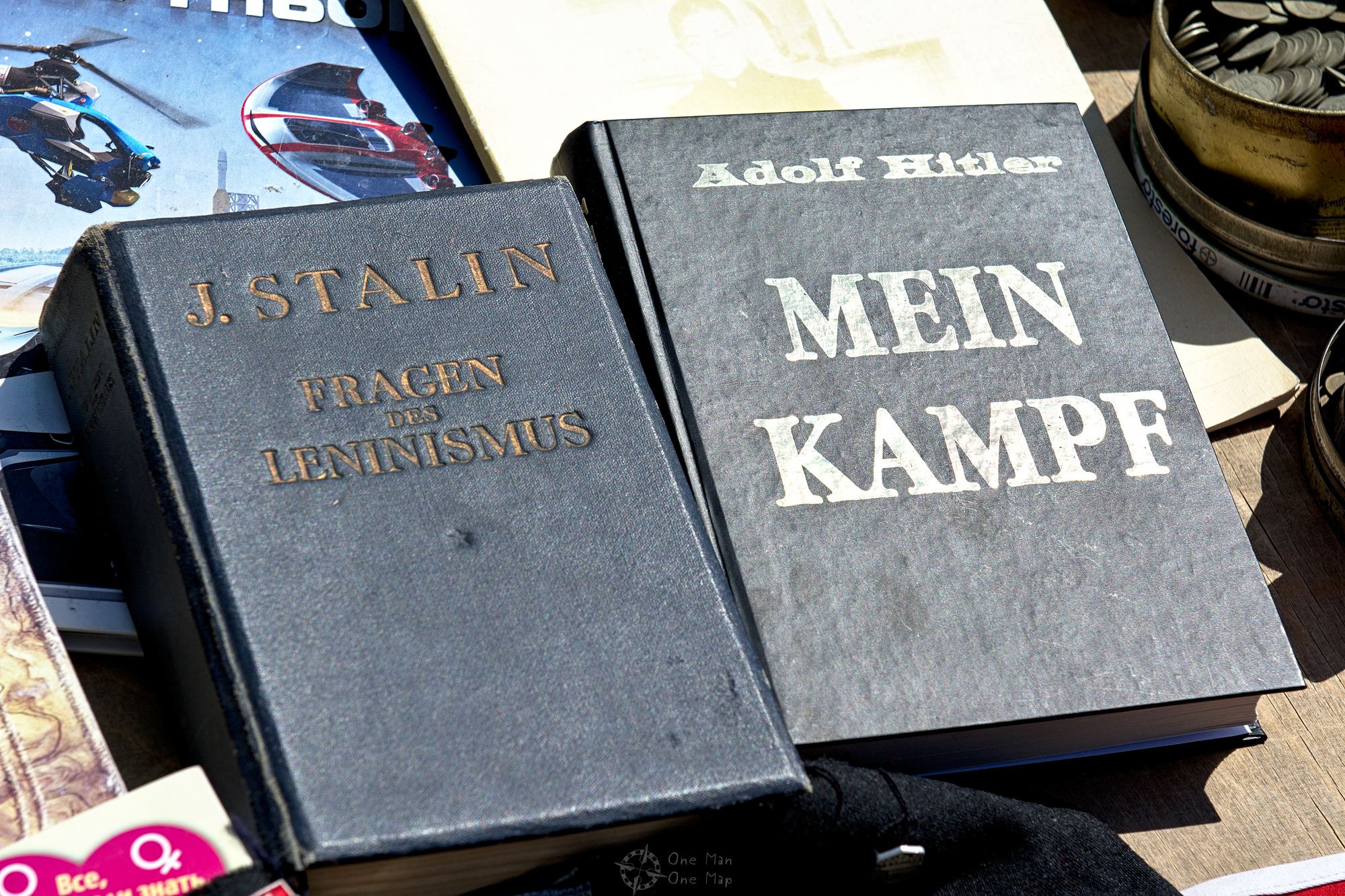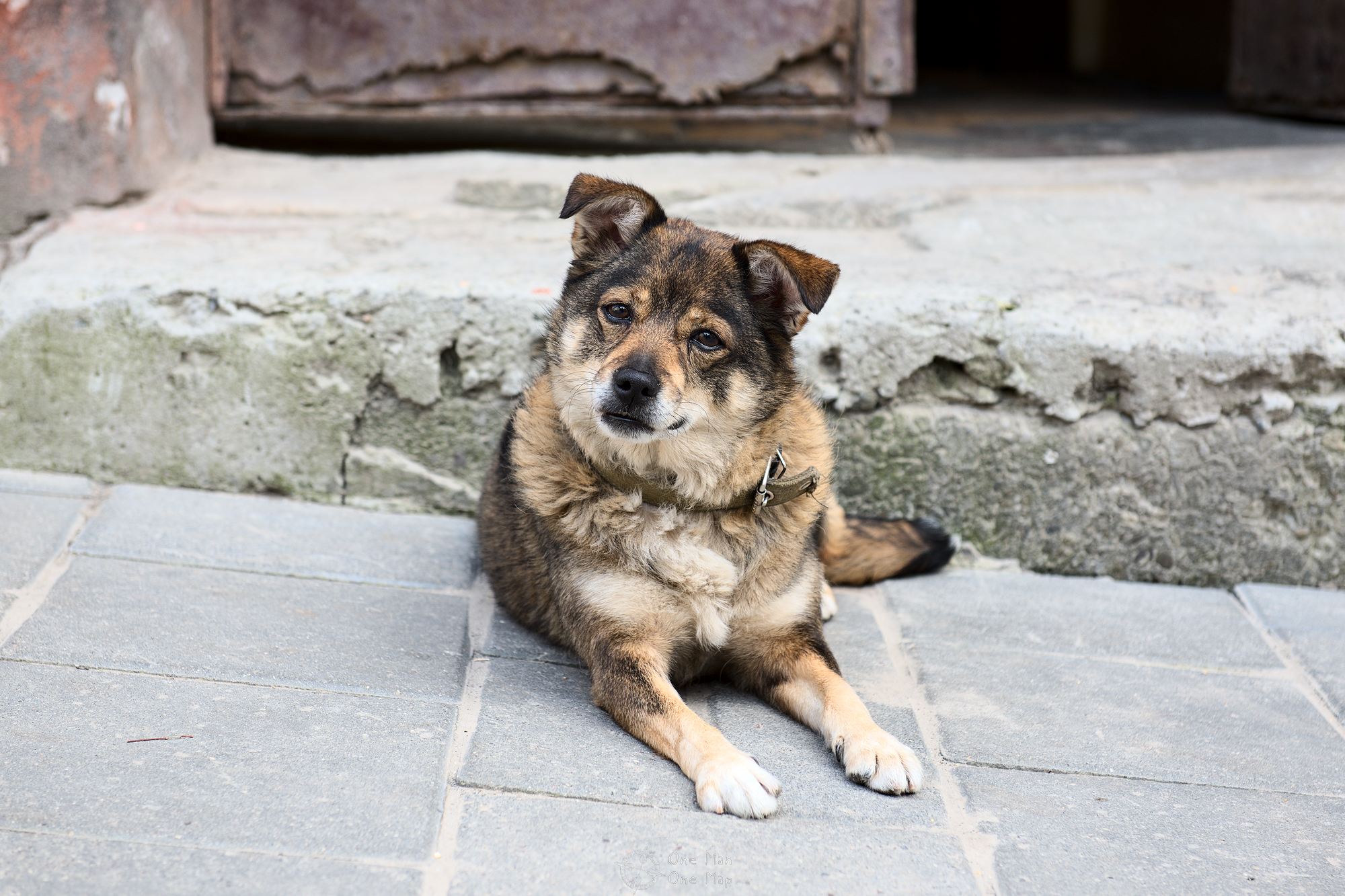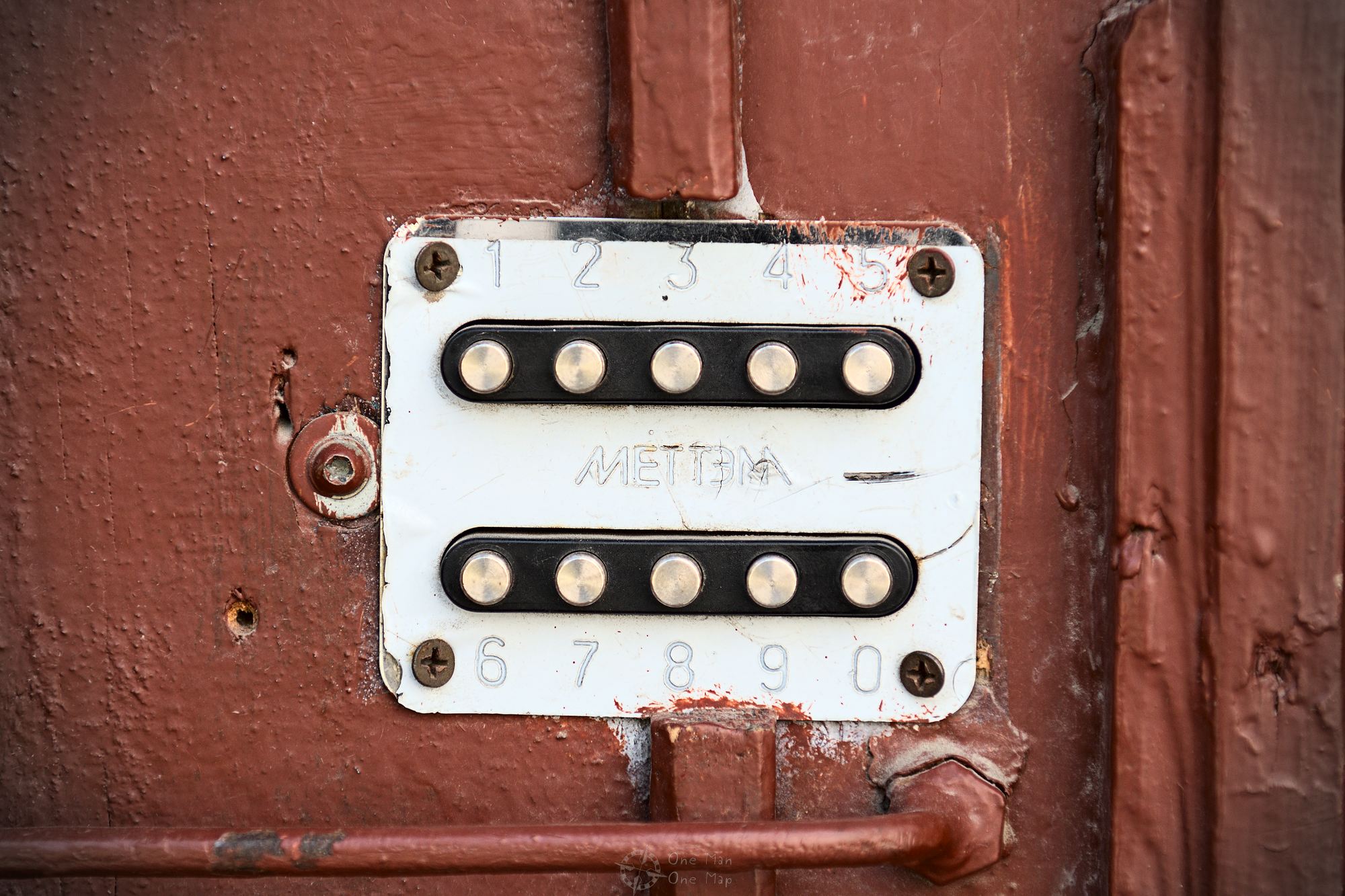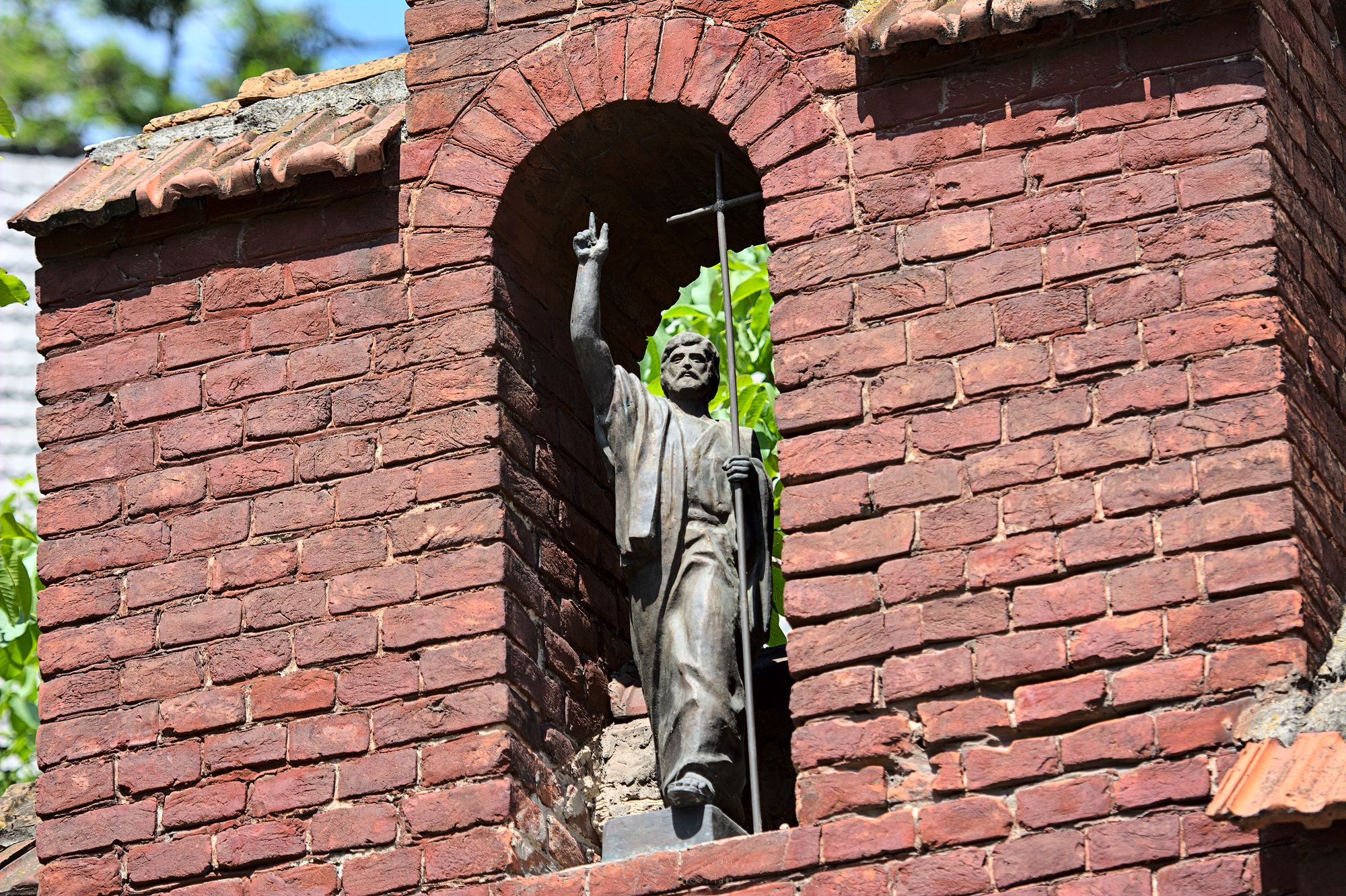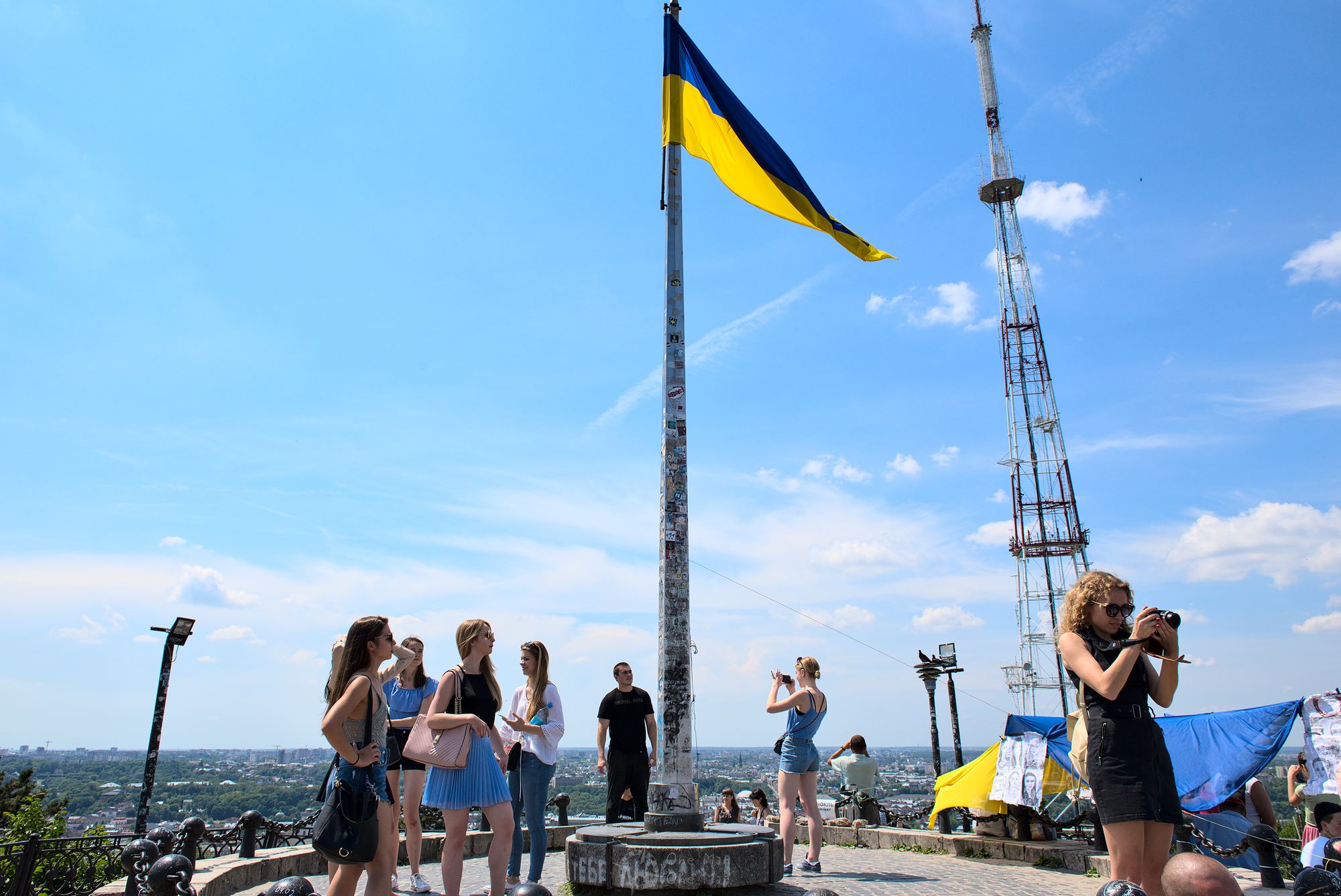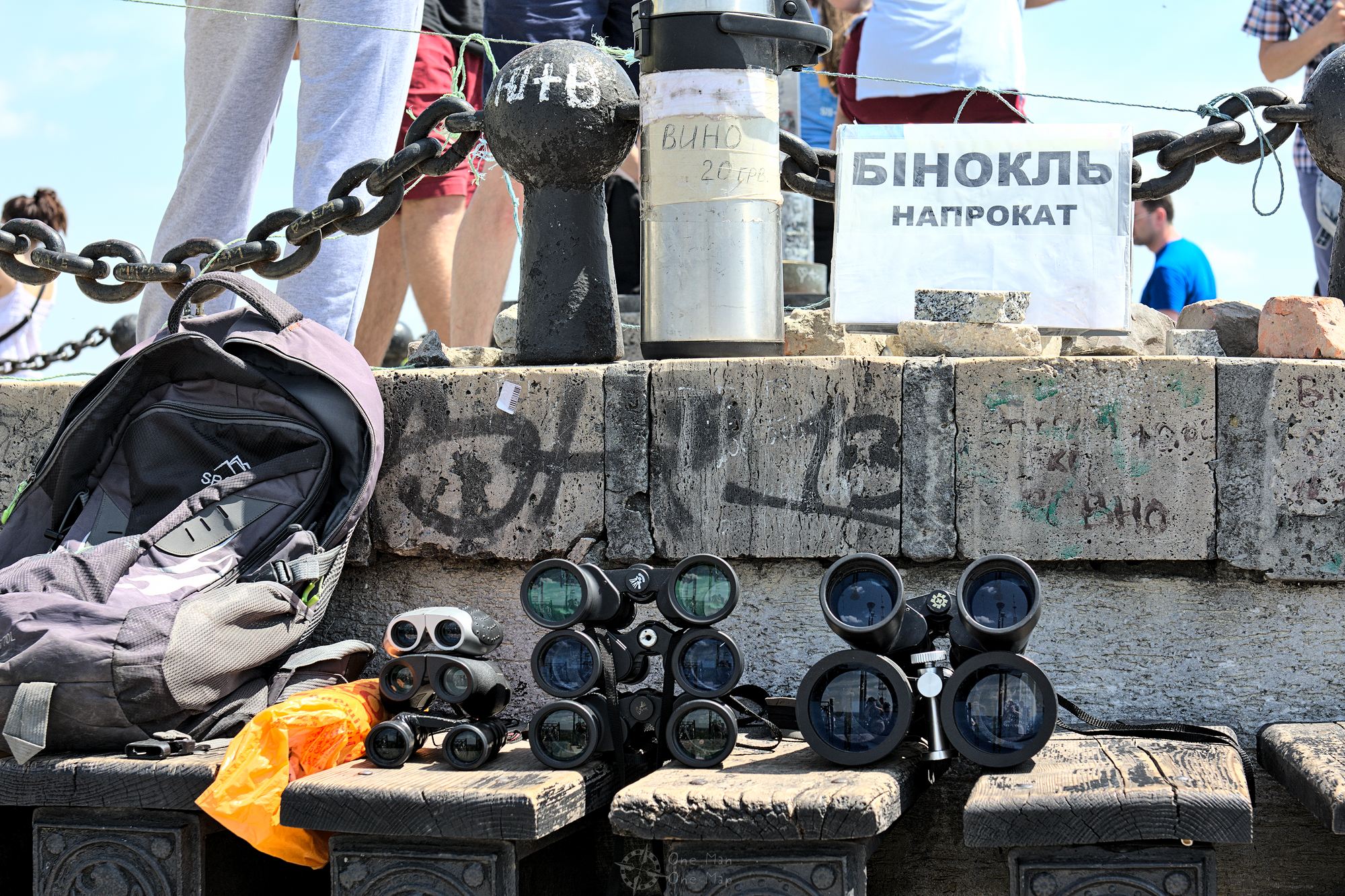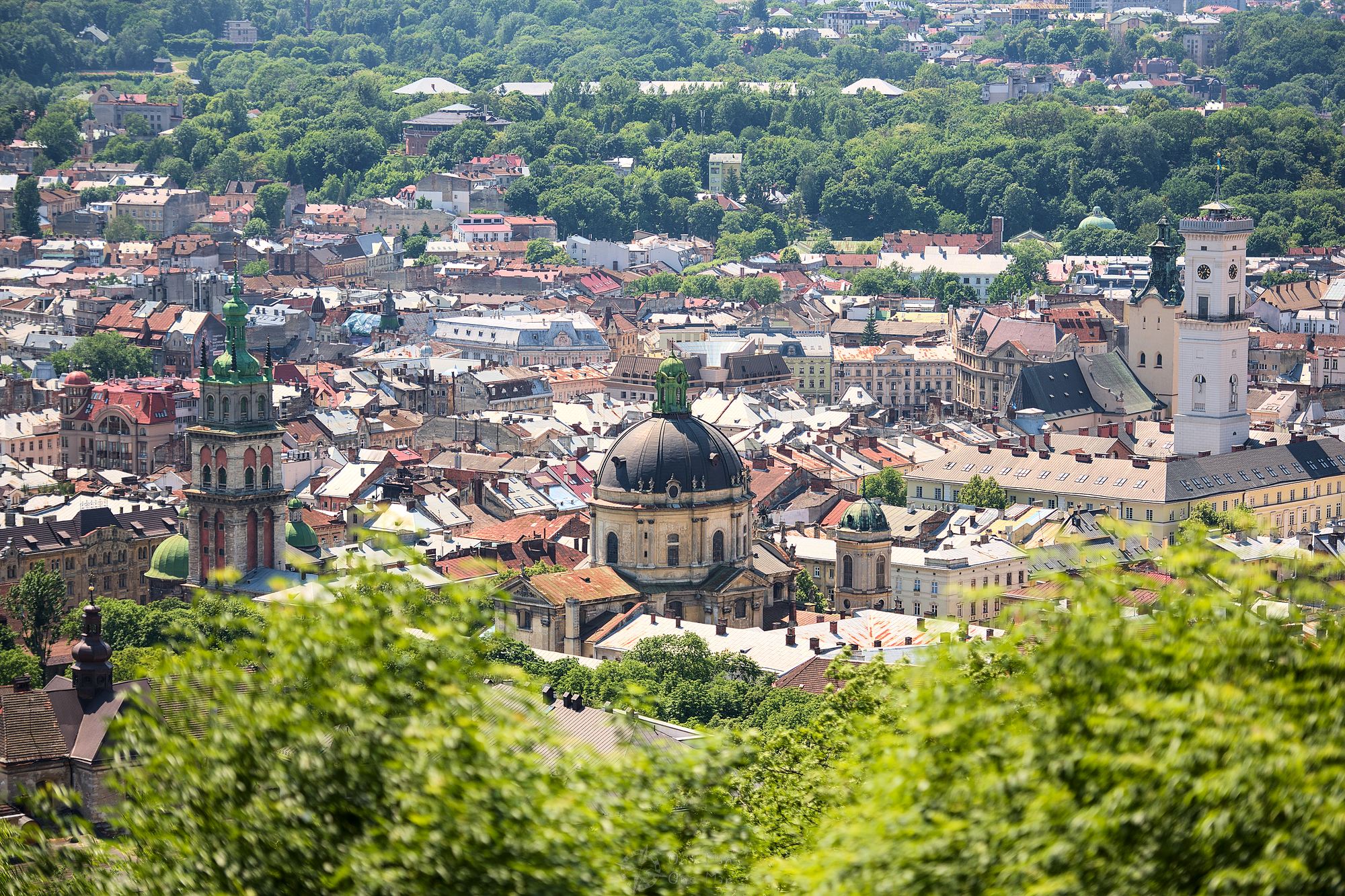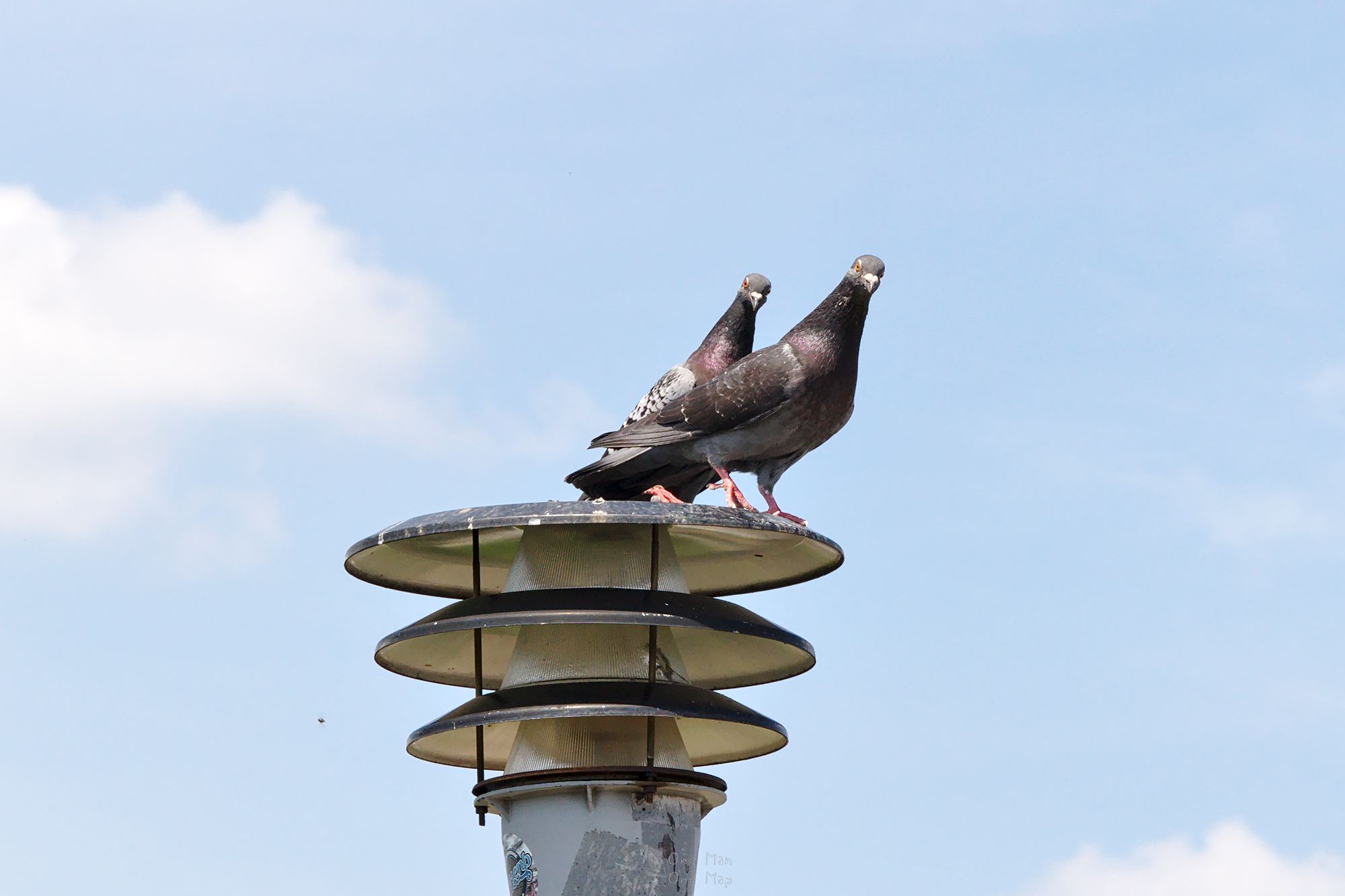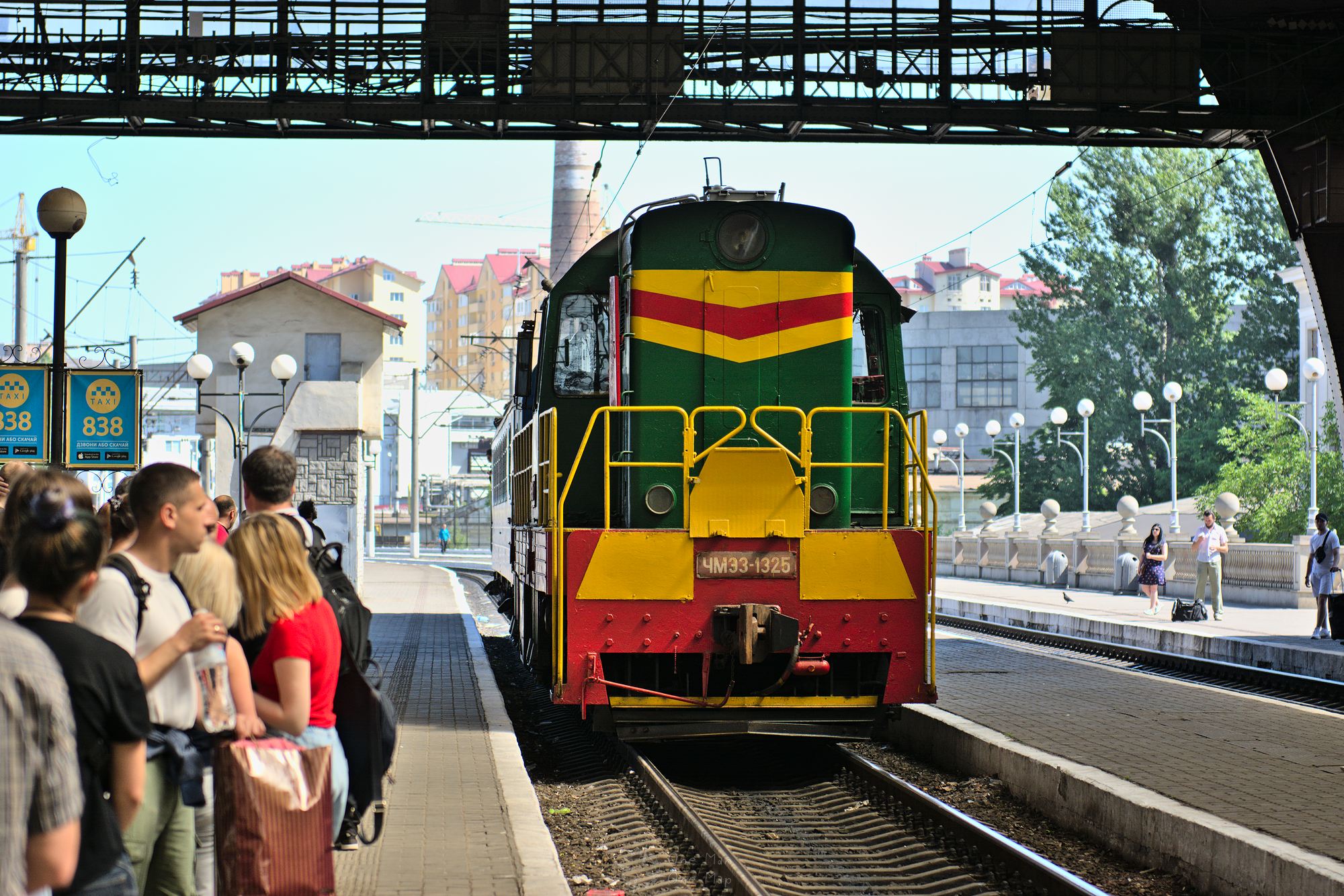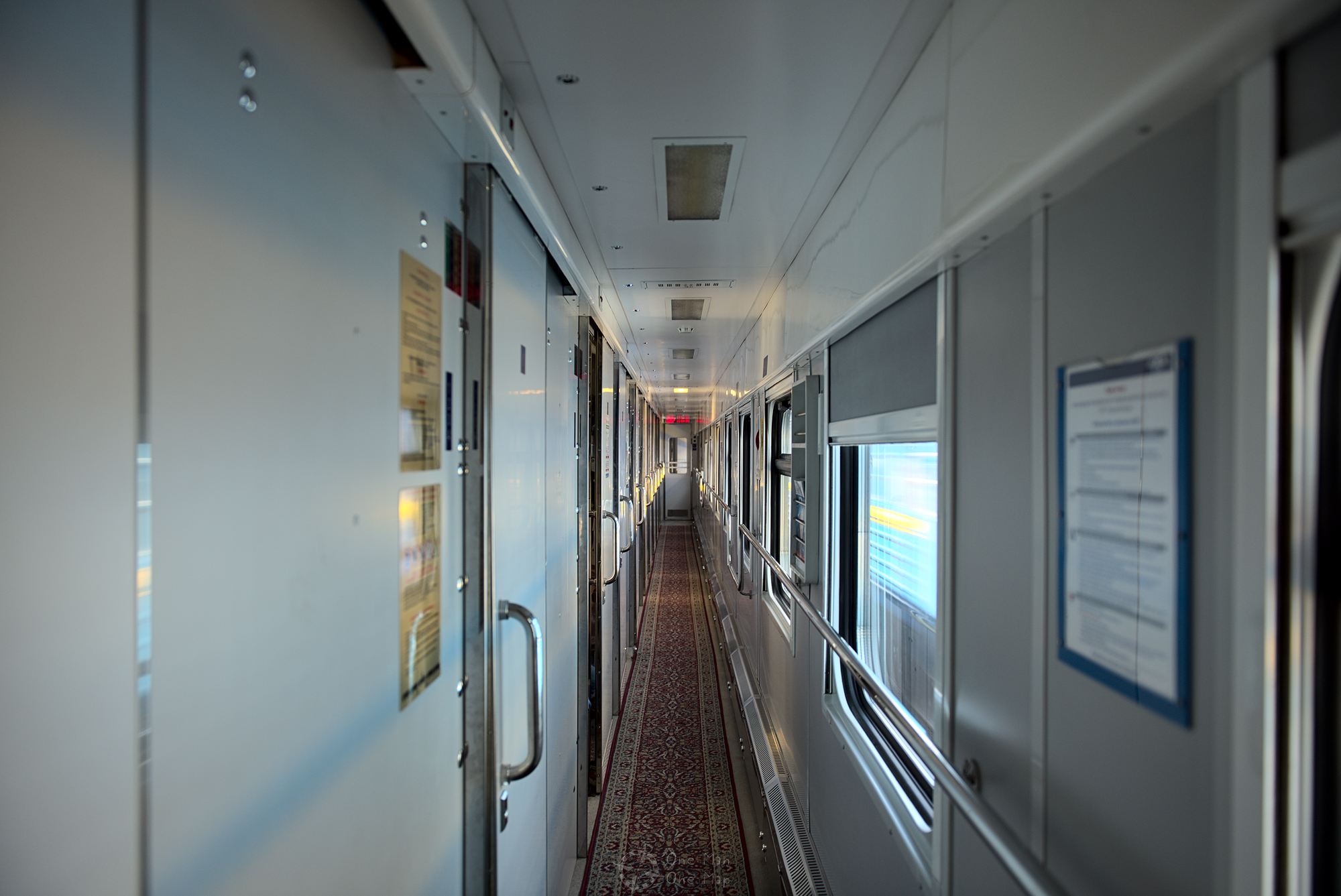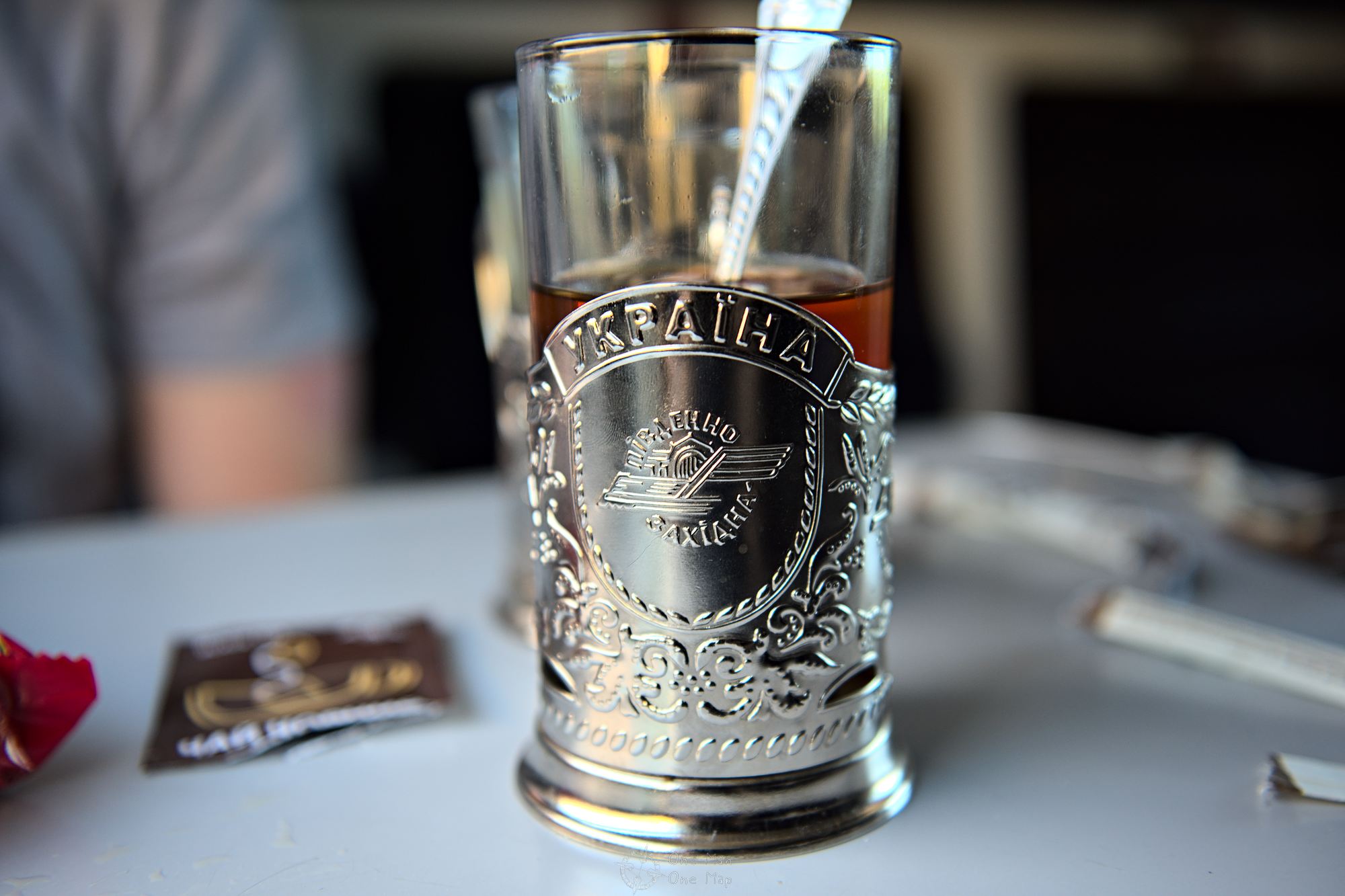Dieser Artikel ist auch auf Deutsch verfügbar. Click here to find out more about the Ukraine!
The Ukraine is a very big country. If you don’t have unlimited time, you have to decide parts of it you want to see. Our decision had fallen on the route Chernobyl-Kiev-Odessa, so basically from the North to the South and back.
Lviv, however, is somewhere far left on the border with Poland and not on this axis at all. Actually we never wanted to go to Lviv. Nevertheless, this was were we fell out of a plane right on the first day of our tour across the Ukraine. And who was to blame? The UEFA!
It’s the Final, and everybody is coming
Going to the Ukraine to see Chernobyl had been our plan for many years. But when we finally got around to actually do it, everything went wrong. Literally everything. The AirBnB in Kiev? Canceled a few days before our arrival. The rental car? Also canceled. Alternatives? None. Literally none. Two days before our planned arrival in Kiev I was standing on the emergency lane of a Belarusian highway, had just invested quite a few Euros in cross-border phone calls and was cursing the UEFA.
Kiev was the host city for the 2018 UEFA Champions League Final, and no one had anticipated such an onslaught of foreign football fans. The surprised Ukrainians just tried to rent their accommodations and cars to the highest bidders, even if existing bookings had to be canceled on short notice. The hotel prices increased to up to 100 times the usual in some places, the airport was overwhelmed with the many charter flights. More than a few football fans were only informed after they had already landed at Boryspil International Airport (Міжнародний аеропорт “Бориспіль”) that they had no bed to sleep in anymore. The city population spontaneously opened up their private apartments and housed many of the stranded tourists on sofas and in guest rooms.
All of that was certainly not an option for us. We had to get away from Kiev, at least until after the final. Still on that same emergency lane in Belarus I pulled out my laptop, connected to the mobile phone network and found a solution. There were still two seats available on a flight to Lviv. The return flight to Kiev was already fully booked, but the Ukrainian Railway (Укрзалізниця, Ukrsalisnyzja) still had tickets. A small detour of just about 1,000 kilometers. But that’s the way it is sometimes while traveling. Still better than in Japan, where a supertyphoon had resulted in a small detour of 3,000 kilometers…
To Grand Hotel Soviet, please!
Lviv is not only popular with polish tourists, but also the most visited city in all of Ukraine and one of the most visited cities in the world. Finding cheap accommodation on such short notice was therefore an issue. All good hotel rooms in the city center were already booked out or too expensive for our budget. Since we now had to move to the outskirts anyways, I simply chose a hotel which was located at a convenient intersection between the tram network and the airport trolleybus. At 19.50 Euros per night for a single room the Hotel Tourist (Турист) was not more expensive than most other accommodations in Ukraine.
If we had known how run-down the place would be, we would have happily paid twice as much elsewhere…
The place was most likely built in the 1960s, the furniture certainly still originated from before the fall of the Iron Curtain. There were spatters of water on the ceilings and scratches of undefinable color on some walls. The elevator looked so old and shabby that we strictly resorted to the stairs instead after using it the first time. Someone had set up a dental practice on the fourth floor. But we were really tired, would be out of the room most of the day anyways and only stay for two nights. So we dealt with it. The bathrooms were okay and the beds soft, after all.
Unfortunately we don’t know if the hotel management has taken our suggestion to convert the building into a “Soviet Adventure Hotel” or a film set for Eastern European horror movies to heart 😉
Lwow, Lwów, Lemberg or Lviv?
Lviv was founded in the middle of the 13th century by Russian prince Daniel Romanovich of Galicia and named Lwow after his son Lev (Lion). The lion is still part of the city coat of arms, and there are numerous lion sculptures still visible in the city today.
Like almost all other cities in the region, Lwow changed its owner and name more than once. The Polish renamed the city to Lwów, the Habsburgs and the Germans to Lemberg. In and after the Second World War the Soviets renamed it to Lwow again and it became part of the Ukrainian Soviet Republic. Since the Declaration of Independence of the Ukraine in 1991, the city is called Lviv (Львів). the name is pronounced like “Lviu”.
Today’s Lviv
Our hotel was about three kilometers from the city center, so we had to get there first. Public transport in Lviv includes a tram network with eleven lines, trolleybuses and regular buses. We were able to reach all important locations by tram and on foot, so we only used the trolleybus once to get from the airport to the hotel on the first night.
The Lviv tram system was founded in 1880 and dates back to the time under Austro-Hungarian rule. It is the oldest tram network in all of Ukraine. A single journey costs 5 Hryvnia (about 15 Euro-Cents), but beware: you need an additional ticket for larger pieces of luggage. The ticket inspectors are described as being not too squeamish!
Tickets can be bought from the driver when boarding. For longer stays a transit pass is the better option.
A special feature are the ticket validators. You insert the paper ticket into the slot and push down the lever, forcing a series of needles through the ticket. Each ticket is only valid for a single ride on a single line, and each line has its own needle pattern. The inspectors can thus quickly determine if a ticket was validated in a vehicle of a different line and the passenger is trying to cheat.
The tram system worked quite well. If not, all they needed to fix it were an old truck and a metal rod…
The historic city center was awarded the status of an UNESCO World Heritage Site in 1998. The buildings from the 19th and 20th centuries survived both world wars almost unscathed. If one didn’t know better, you might easily assume to have ended up in one of those many small European cities.
Almost a bit too “European”, right? But that shouldn’t come as a surprise. Lemberg was an industrially, culturally and commercially important city with its own university. The Austro-Hungarian Monarchy ruled the city for almost 150 years before the First World War. So Lviv was always much closer to the “typical Central European culture” than many cities further east.
There is no lack of statues of national celebrities in the cityscape. A crowd puller is the one of polish painter Epifany Drovnyak, better known as “Nikifor”. He painted more than 40,000 pictures during his lifetime, but sold most of them very cheap to spa guests and spent most of his life as an illiterate in extreme poverty. Only a few years before his death he became world-famous. Touching his nose and the outstretched finger is said to bring good luck 🙂
Not far from Nikifor’s statue, Taras Shevchenko (Тарас Шевченко) is staring at the passersby with a grim look. He is considered to be the most important Ukrainian poet, and without him today’s Ukraine probably would not exist.
The Ukrainians existed as a distinct ethnic group for centuries, but were scattered over Austria-Hungary and Russia and were suppressed. Shevchenko laid the foundation for modern Ukrainian literature, the modern Ukrainian language and the awakening of a Ukrainian sense of national identity. The latter eventually led to the proclamation of the Ukrainian People’s Republic, the Ukrainian Soviet Republic and independence from the Soviet Union. His tomb in Kaniv (Канів) is now considered a national sanctuary.
Until the Second World War, the Polish represented more than 50% of the urban population. After 1945, most of them were expelled from Lviv and almost all evidence of their former existence has been removed over the years.
A good example for the strong “western” orientation is the Lviv State Academic Theater of Opera and Ballet (Львівський Національний академічний театр опери та балету, Lʹvivsʹkyy Natsionalʹnyy akademichnyy teatr opery ta baletu) built in 1897. The architect looked at the the Vienna Court Opera for inspiration. Marble elements came from Vienna, the canvases for the paintings from Belgium, the electric lighting from Austrian company Siemens, the stage technology from Poland. And everything was paid for in Austrian Krones.
The famous Dominican Cathedral and the attached monastery are also no exception. If you would have expected the typical Russian Orthodox style present in most of Eastern Europe, you will be disappointed. The church belongs to the Greek Catholic parish church and looks like all other Baroque churches inside.
Enough old buildings and churches for today? Enough tourist stuff? It’s somewhat boring here? You may also be thinking “Why do all the Polish come to Lviv when everything looks exactly like back home?” Yeah that’s what we felt like after the first two hours. Definitely way too normal for my standards… 😉
But before we started to go looking for the unusual again, we first had to get breakfast. Of course our hotel/Soviet prison/horror dungeon didn’t serve any. Our noses led us to a Georgian restaurant called Tamada in Virmenska Street which served Khachapuri (ხაჭაპური). Allegedly Khachapuri is “a baked cheese bread which is eaten as a snack”. In reality the thing was as big as a plate, about two inches high and there was a lot of cheese on it. Very tasty, but a bit rich for a “small snack”… 😯
The good news: we didn’t have to go looking for the unusual. It was already waiting right next door. Welcome to the Austro-Hungarian military restaurant “Bruderschaft” (Брудершафт, Brotherhood)! Where the staff wears uniforms, the food tastes like back then, and in the basement a collection of old rifles, coats and other artifacts is waiting for a selfie 😉
In the courtyard of the royal brewery we came across the “Beer Belly of Ukraine”, or the “Navel of Beer”. Whatever this artwork is supposed to tell us – definitely a stately beer belly must have posed as a model 😉
In Lviv I’ve made a more serious effort at street photography for the first time to learn something new and to have more people in my pictures in the future. I’m quite satisfied with the results, but there were also a lot of very good and easy to catch motives around. Whether in normal situations …
…or in rather weird ones 😉
My personal favorite are old cars from the former Eastern bloc. 40 years old, rusty, rickety and broken. But that’s not something you can’t quickly fix with a bottle of water and a wrench, while waiting at a red traffic light!
On the market
Of course the touristic center in Lviv looks beautiful, but you only had to cross three side streets to see that the average Ukrainian had much less money in his pocket than most tourists. The average income is currently just under 330 euros per month. 40 percent of the population earn less than 200 euros. A visit to a restaurant or even just a normal grocery store are often out of the ordinary.
Anybody who can leave the Ukraine for a better future in a different country does so. It is one of the fastest-shrinking countries in the world. Those who stay sell everything they can on the roadside – vegetables from their own gardens, flowers, fish. The scenes reminded me a lot of our visit to Chişinău the year before.
The more professional dealers were able to afford stalls on the square in front of the Arsenal. They had mainly books and antiques from the Soviet Union on sale – belt buckles, badges, water bottles, helmets, knives, cameras, binoculars, and more. For about 20 Euros I bought a 50 year old Mir film camera made in Soviet Russia.
Stalin’s “Questions of Leninism” and Hitler’s “Mein Kampf” side by side on the same table. Already a very rare combination, but those were also original issues in German… 😯
High on the Castle Hill
The castle of prince Daniel Romanovich of Galicia used to tower on Castle Hill about 100 meters above the city. There are only a few ruins left today, but the top of the hill makes a very good vantage point. From here you can overlook the whole city. And if you’ve forgotten your binoculars in your hotel room again, you can simply rent some from the friendly street merchant 🙂
After a long and exhausting day we went to sleep in our prison beds and then to Kiev by train the next morning. We paid 628 Hryvnia (about 20 euros) for the six-hour journey in a surprisingly comfortable InterCity train. Unfortunately there was not much to see along the 550 kilometers of track. The country is mostly flat and sparsely populated.
Although the detour via Lviv was not planned and caused a lot of stress, in retrospect we were quite happy with the decision to go there. Kiev is much larger, but did not have as much to offer as we had hoped.
Chernobyl was more to your taste than Lviv? Then the next posts should be more to your liking again… 😉
This post was written by Simon for One Man, One Map. The original can be found here. All rights reserved.

